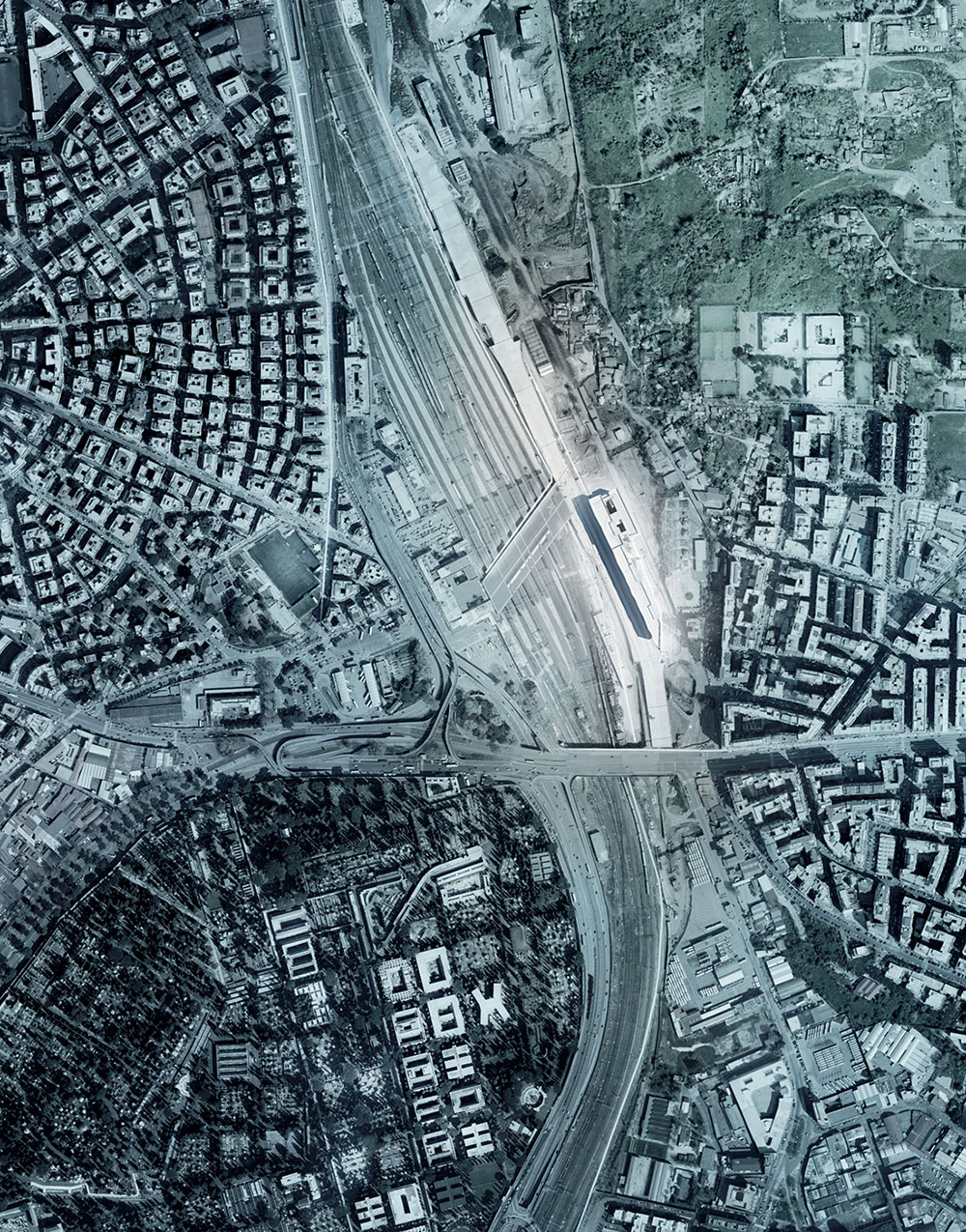
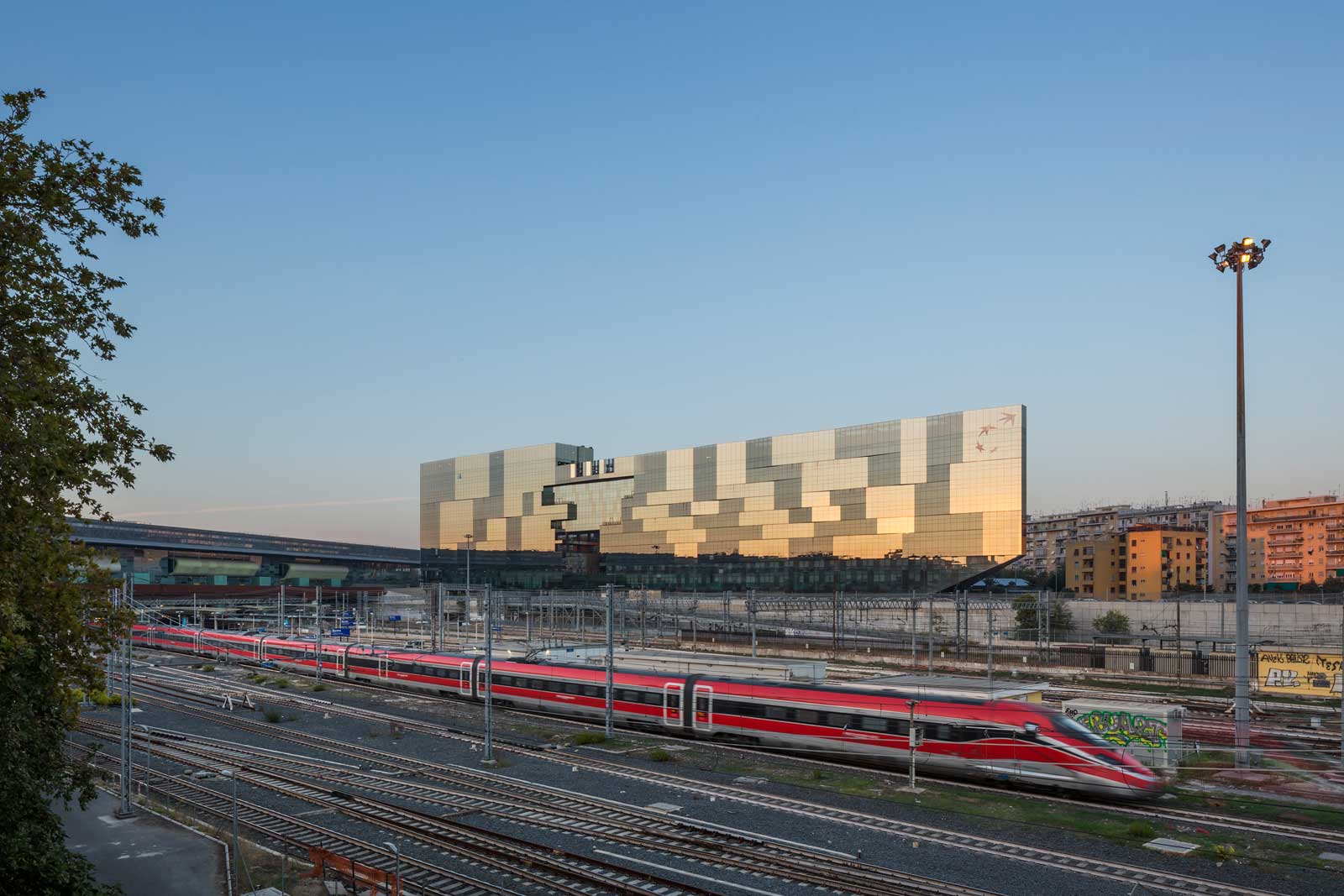
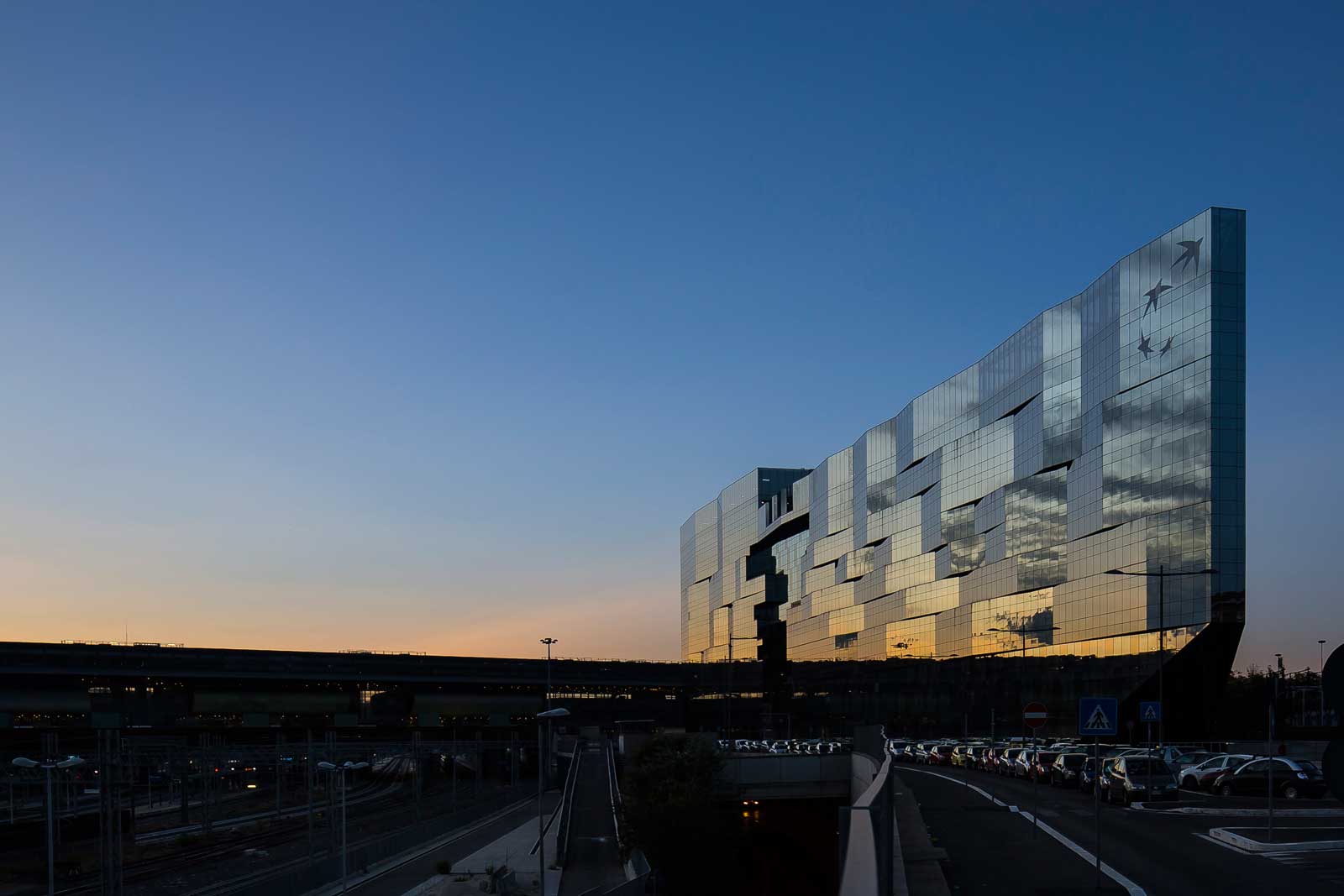
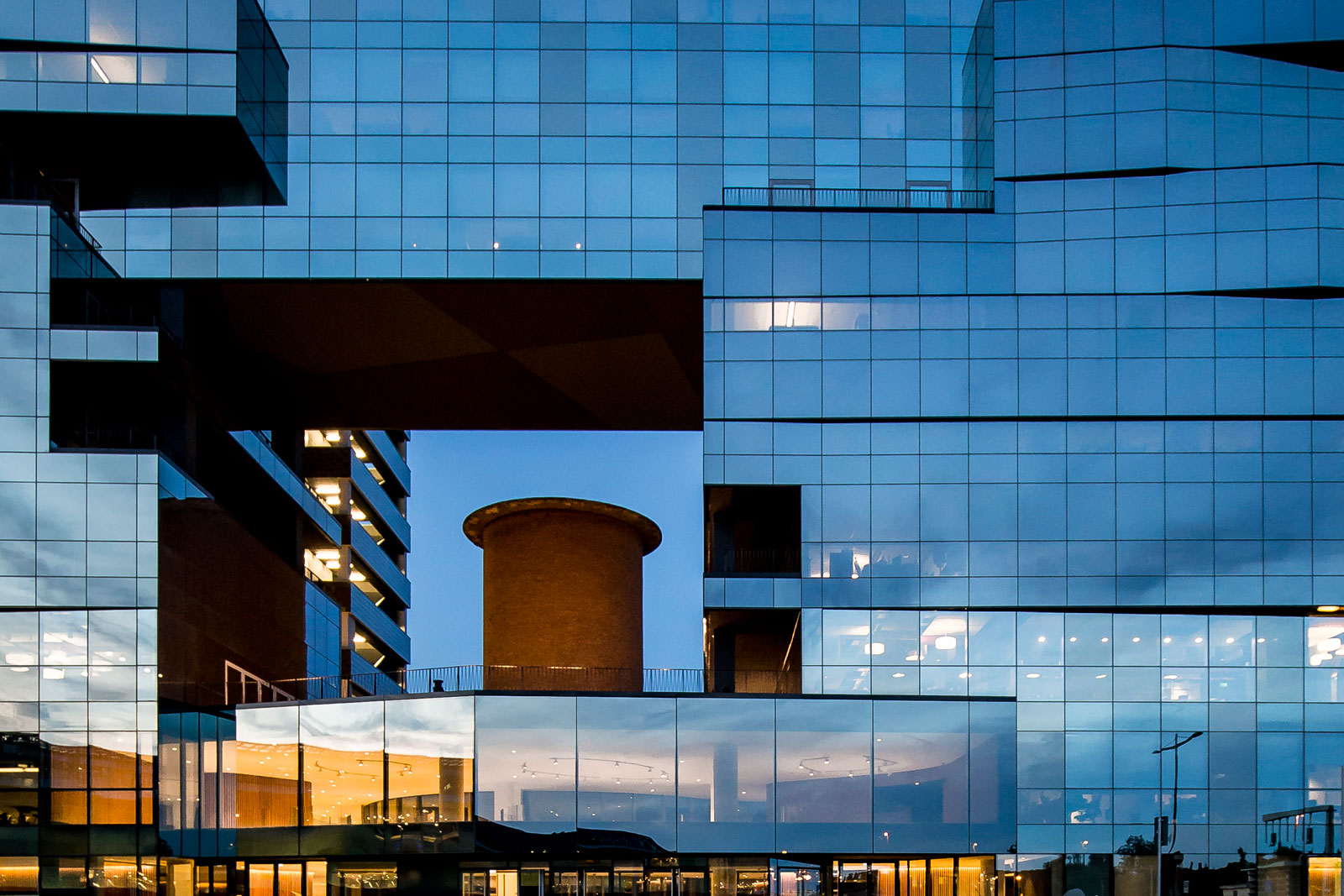
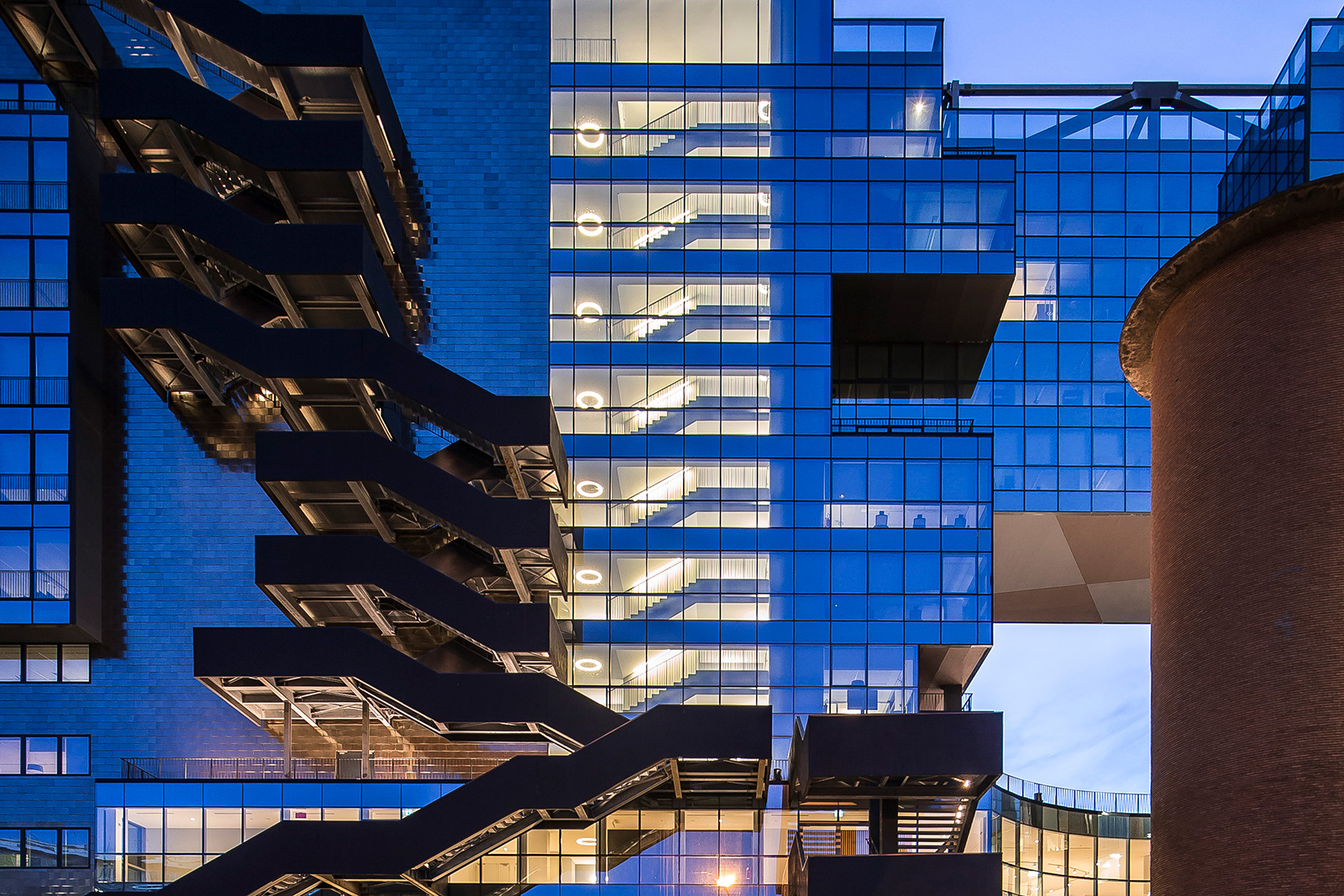
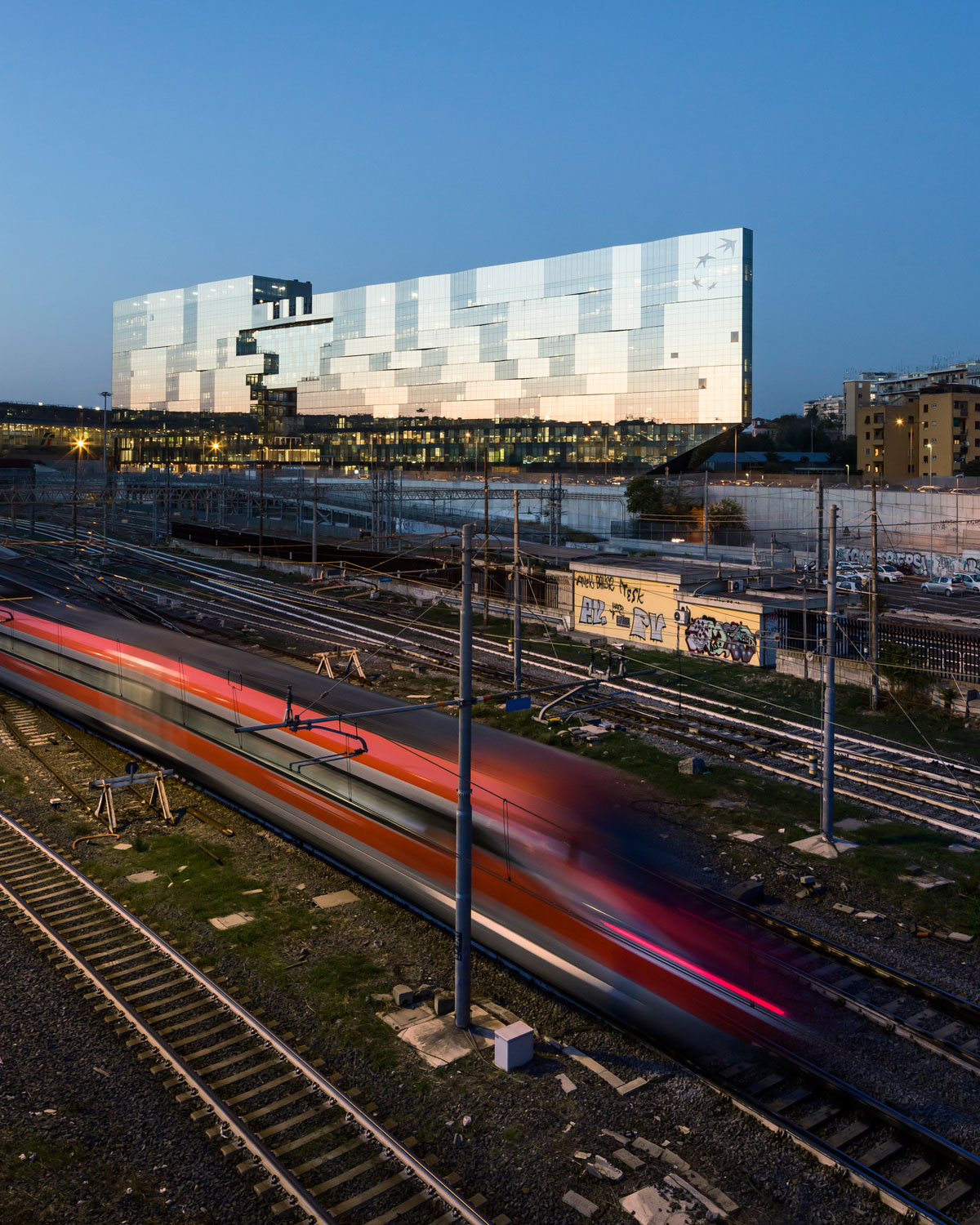
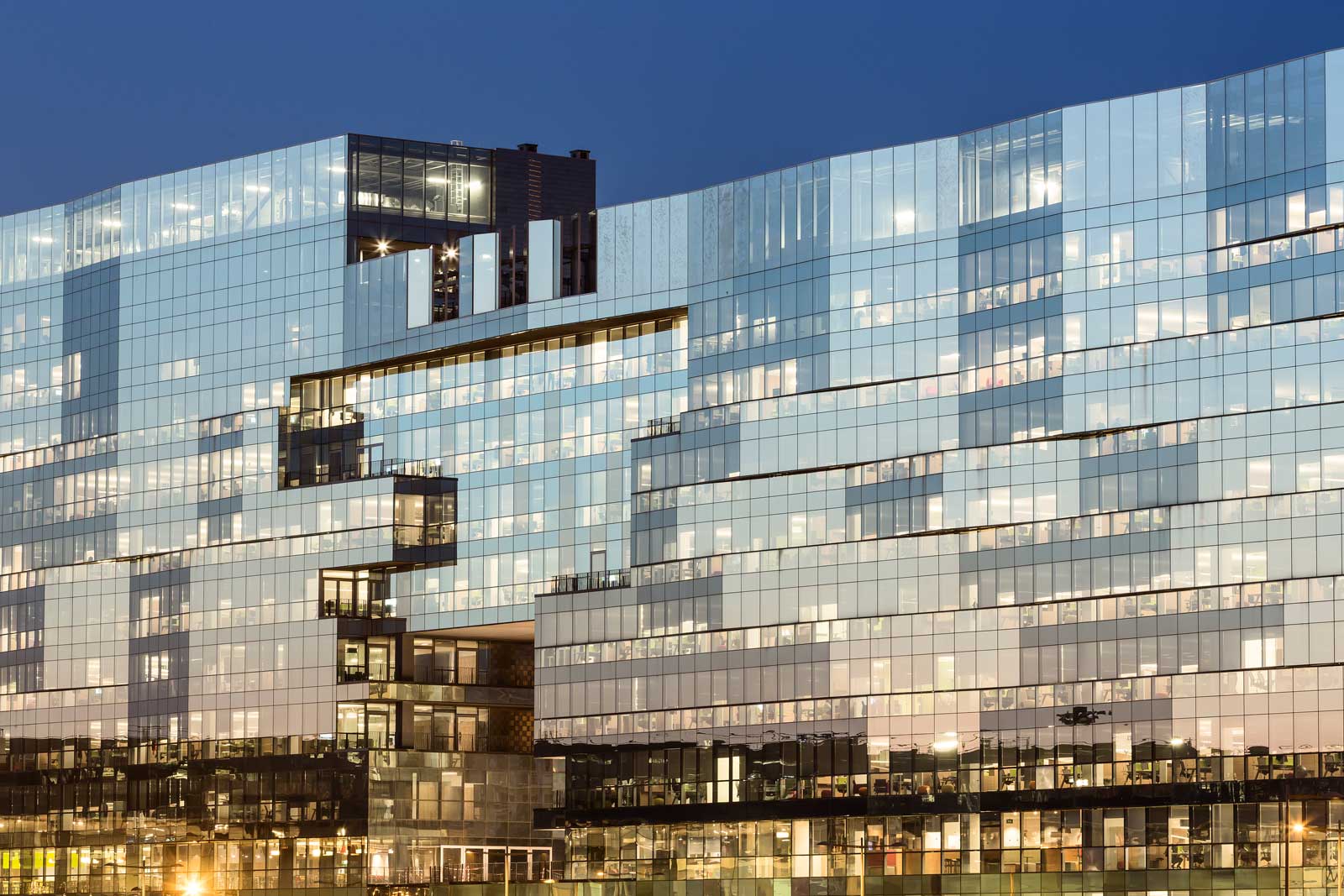
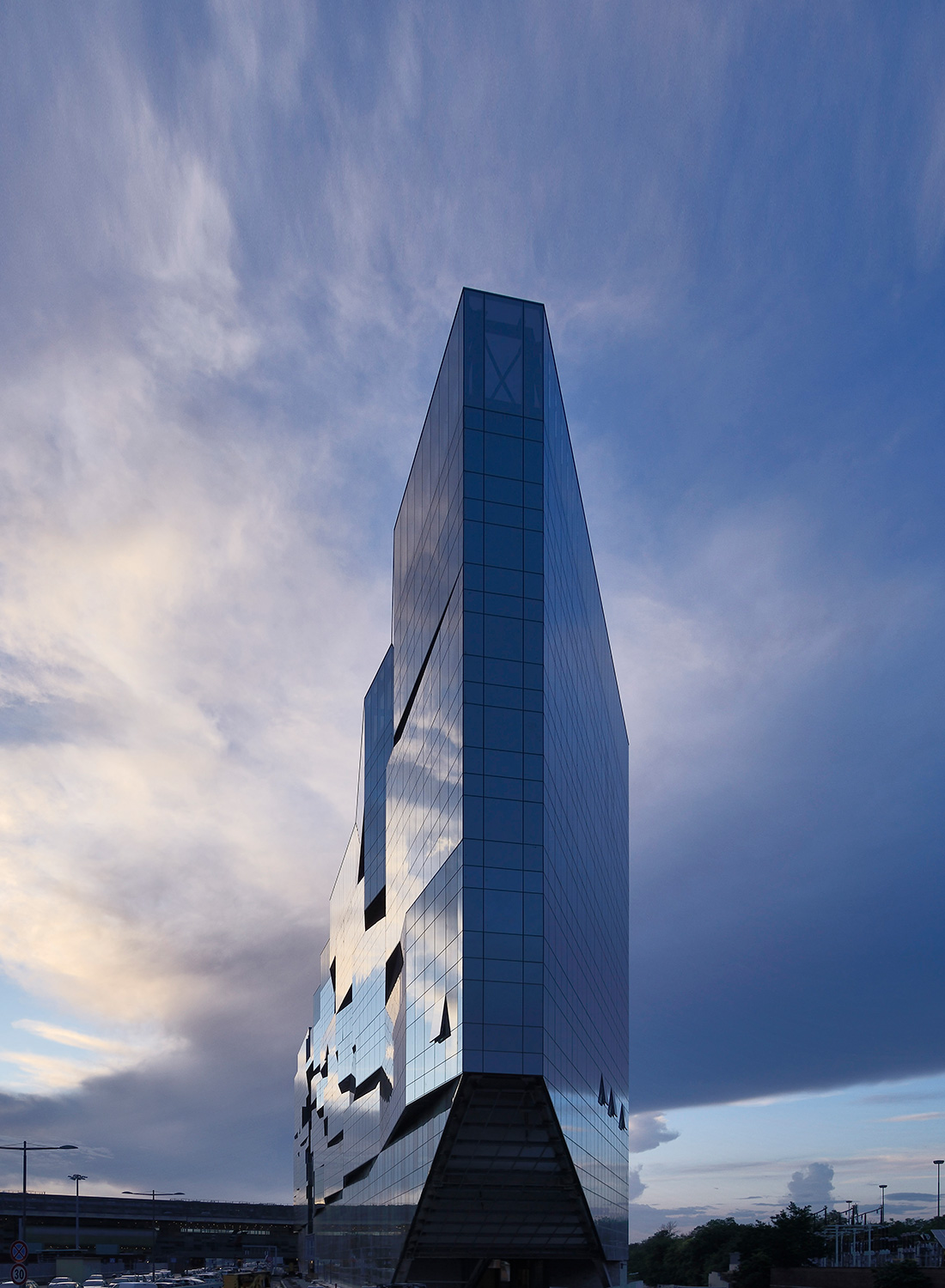
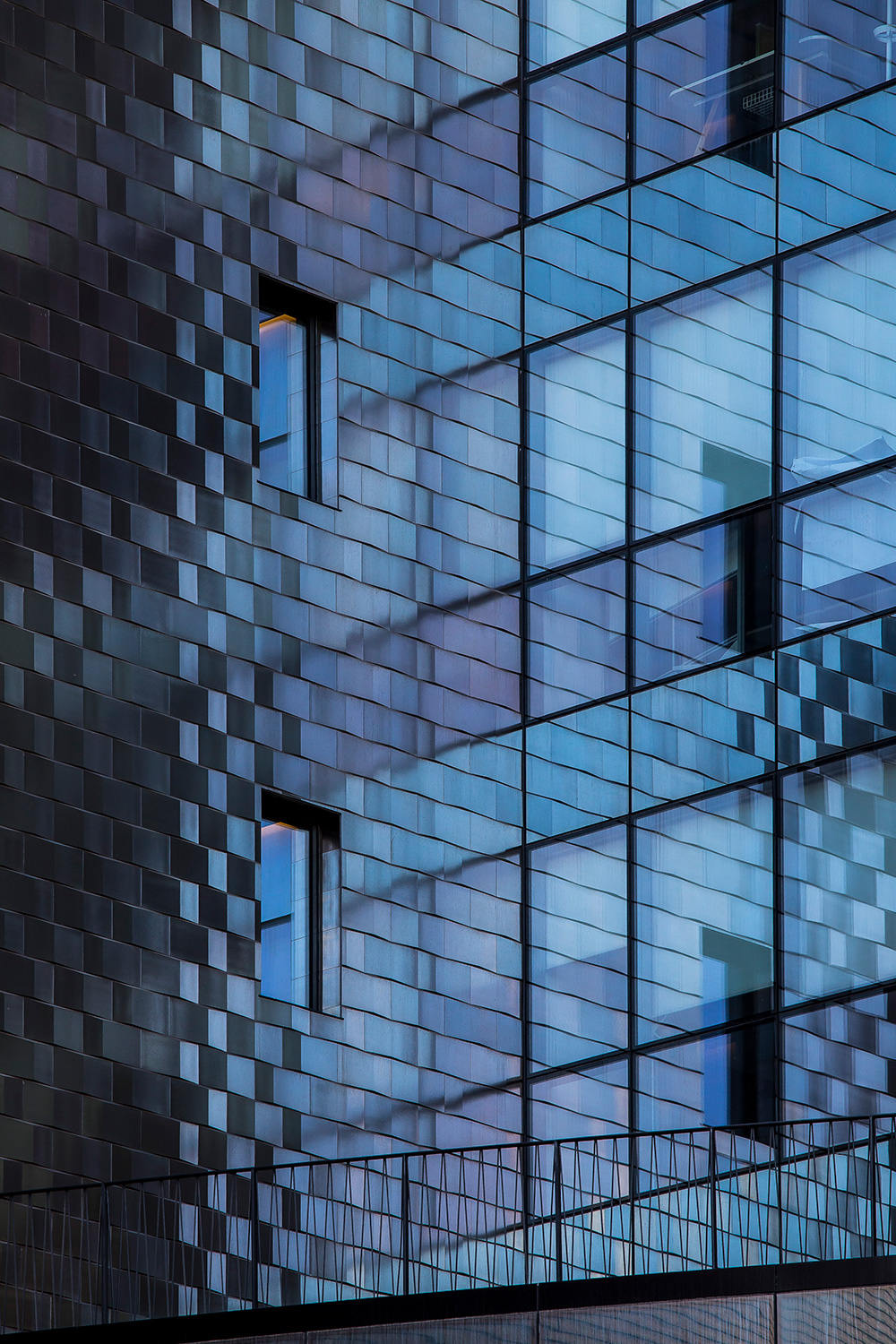
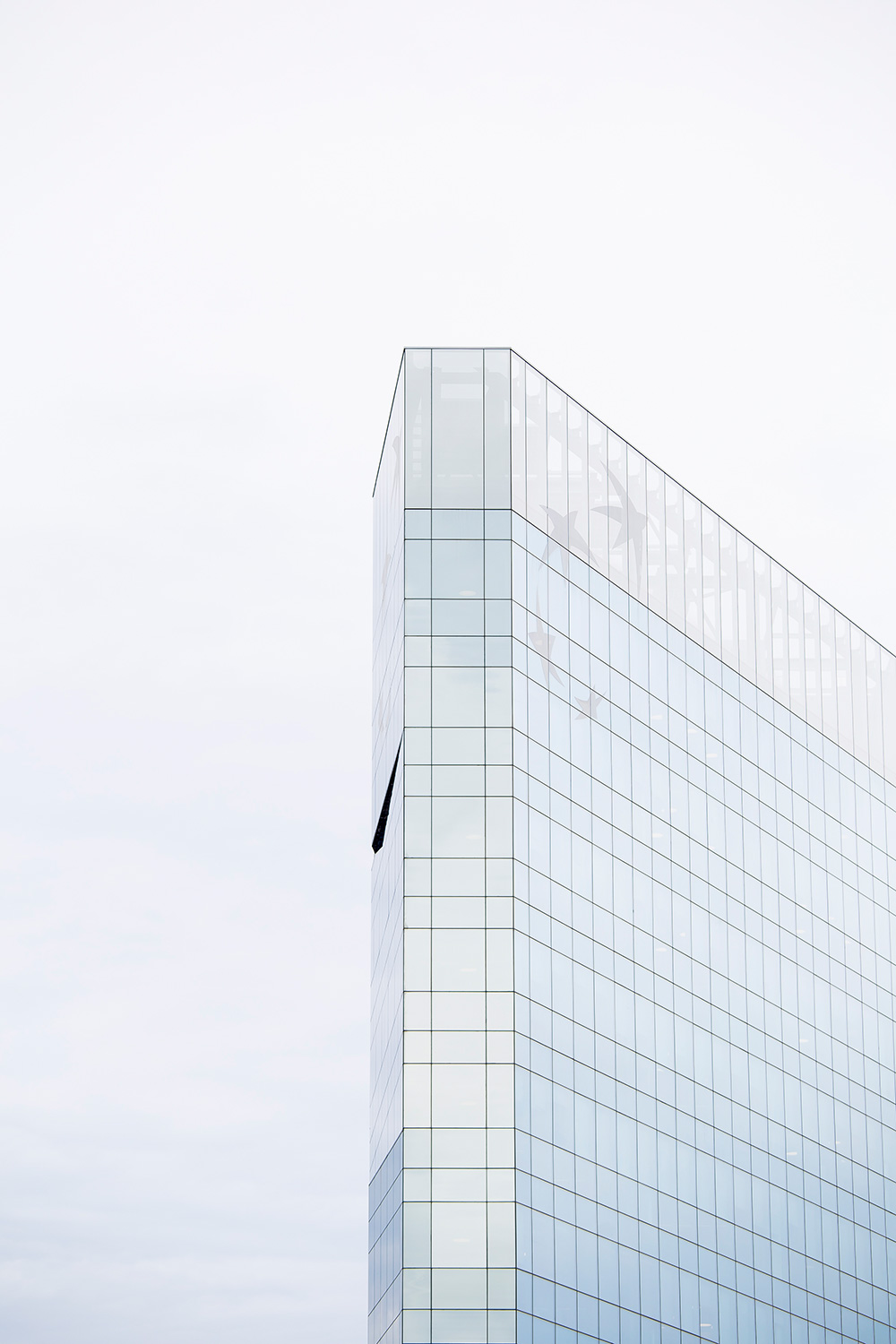
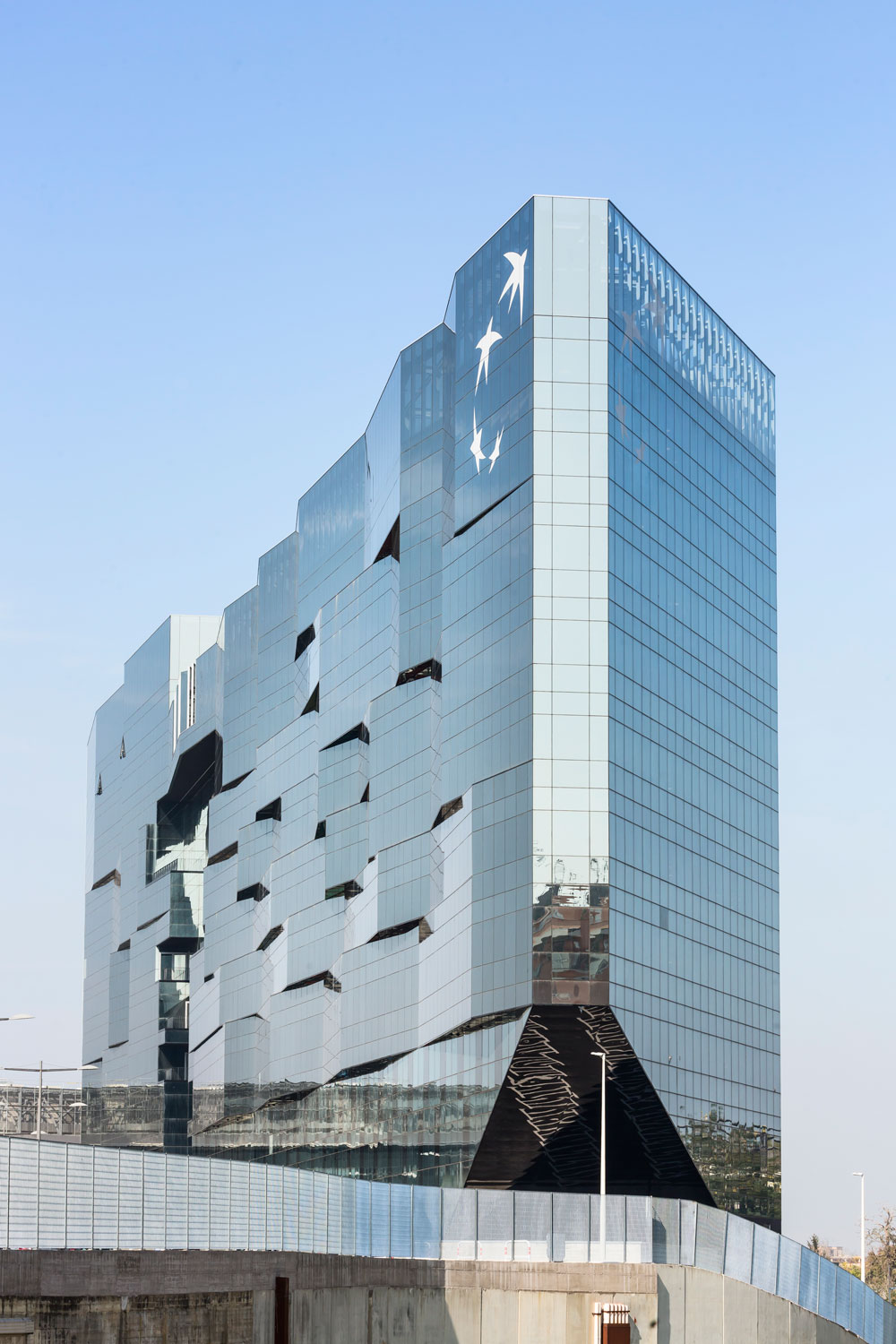
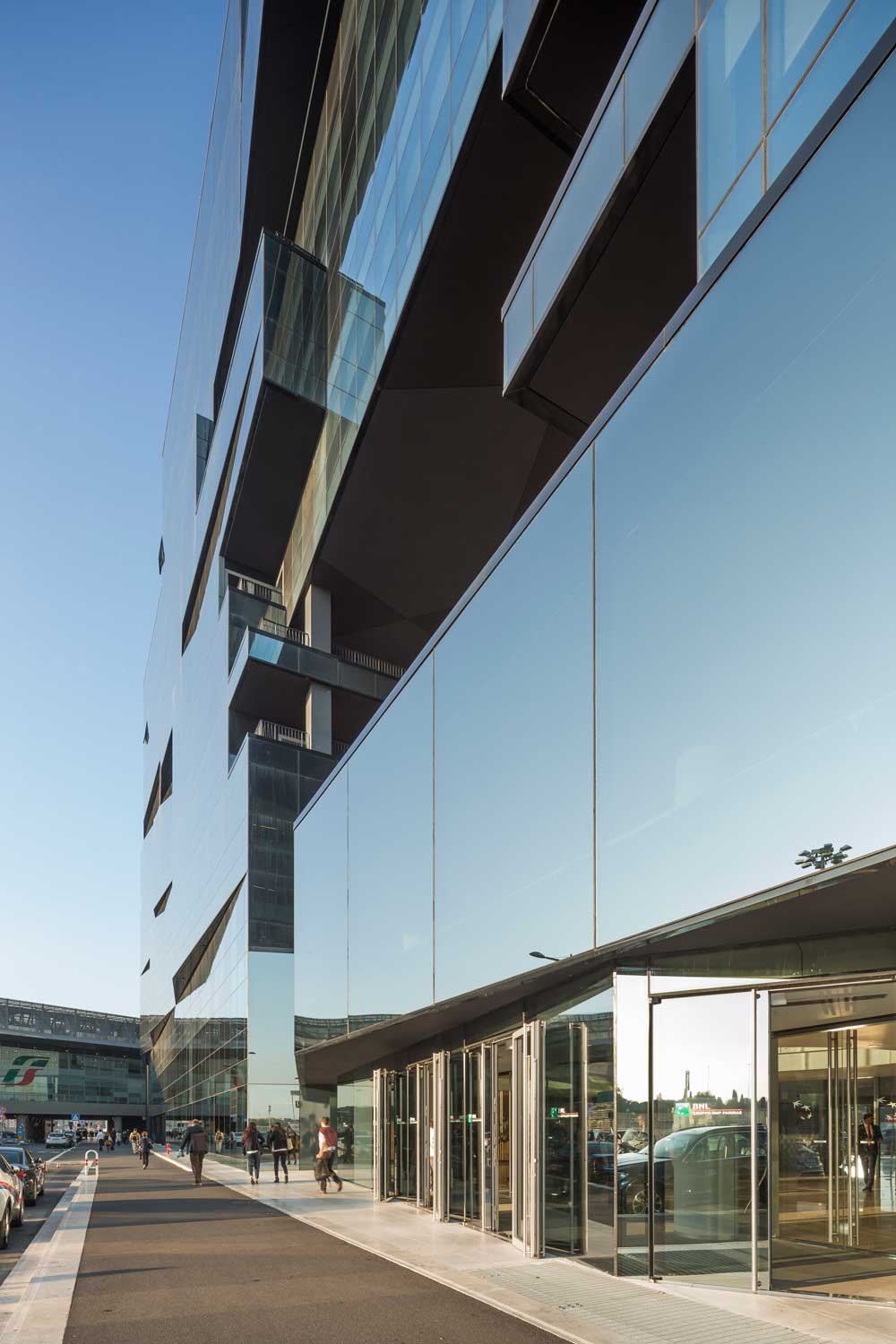
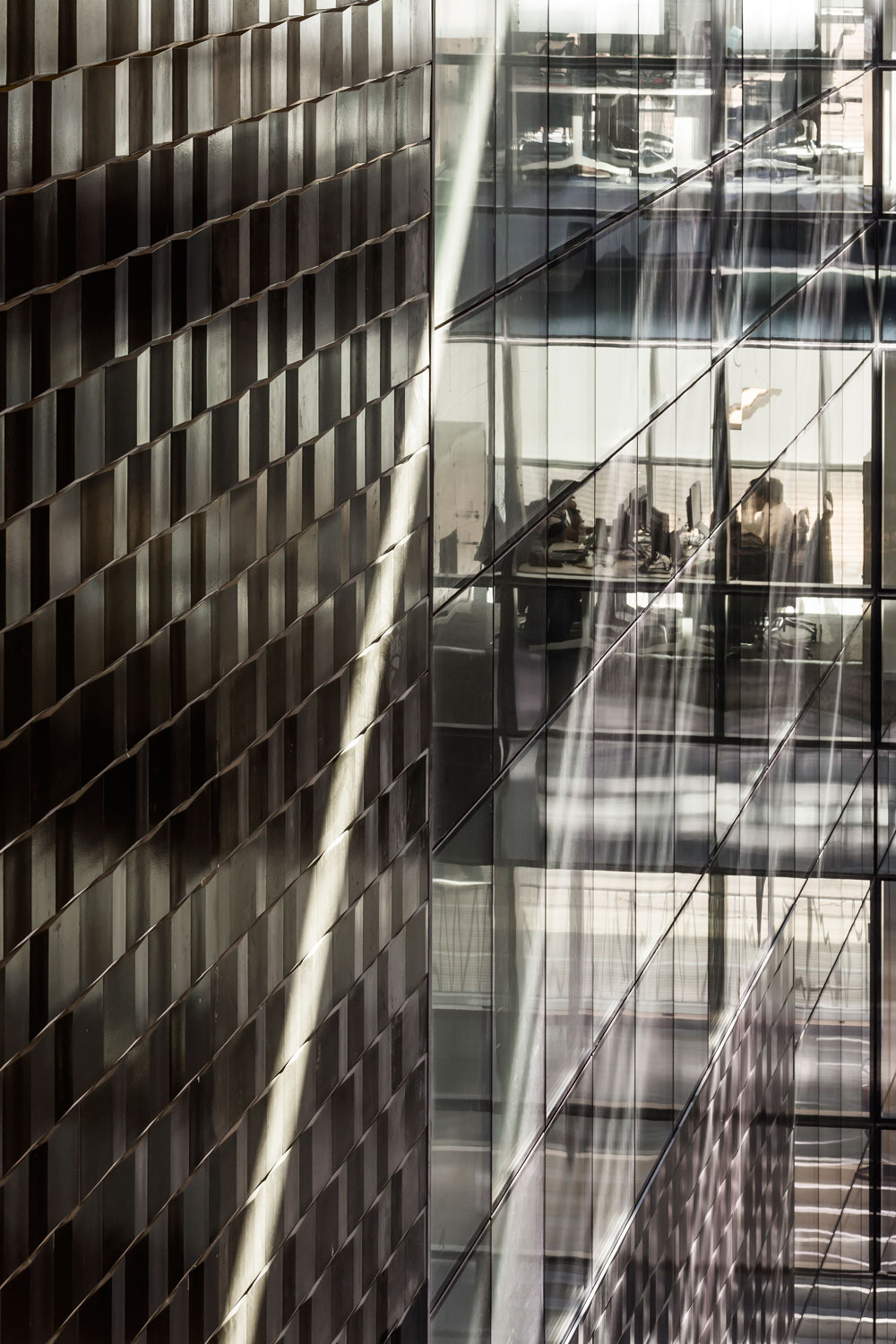
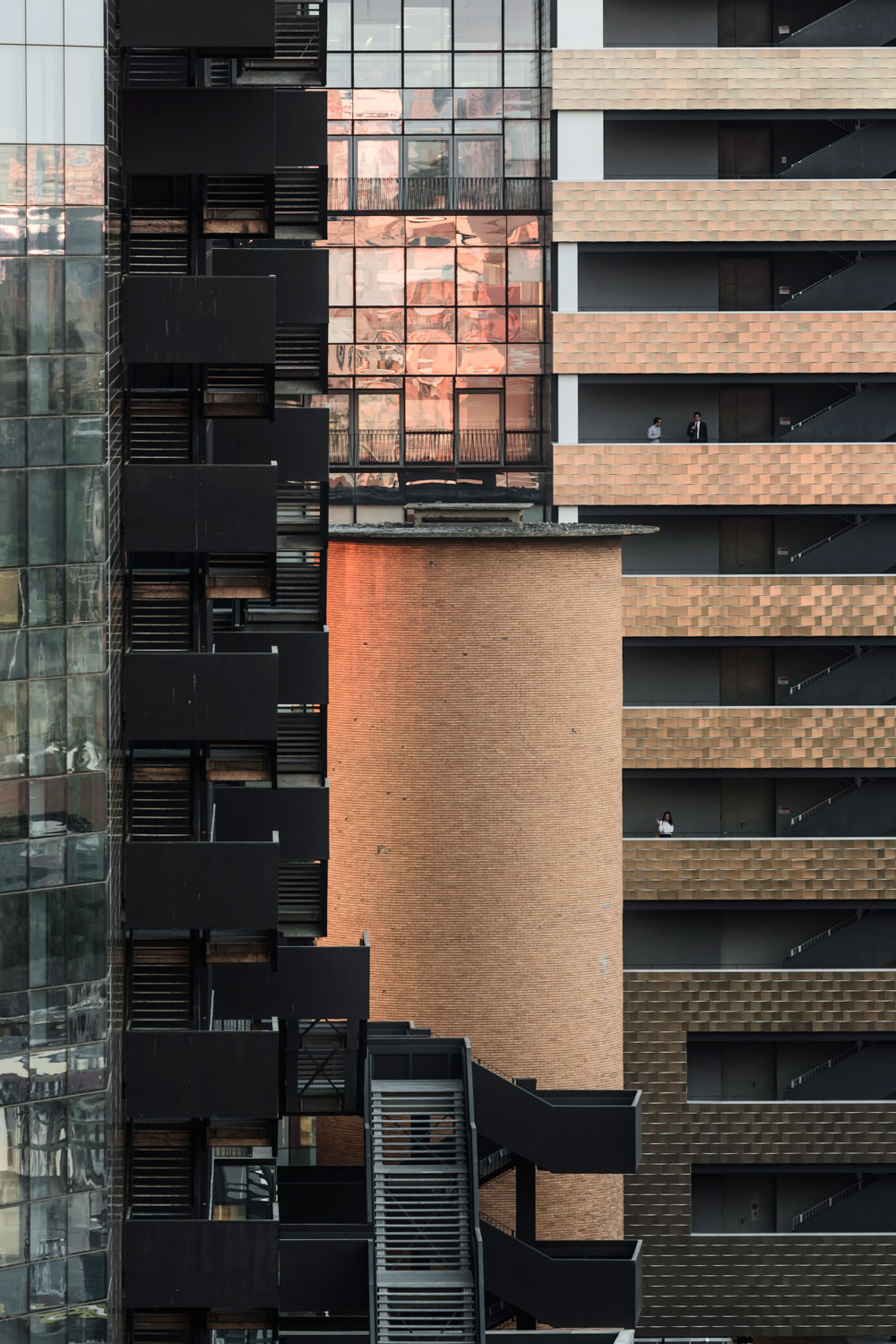
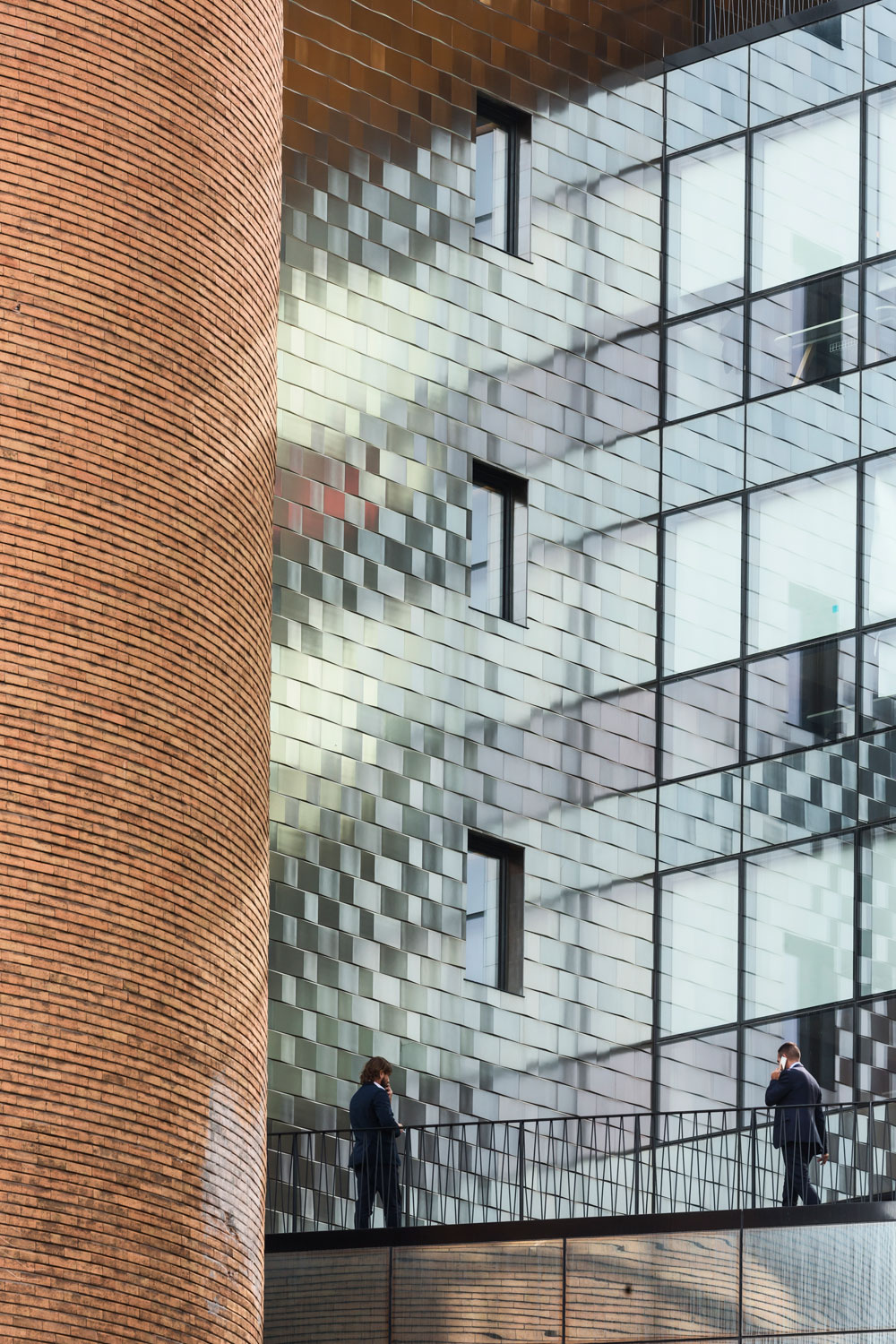
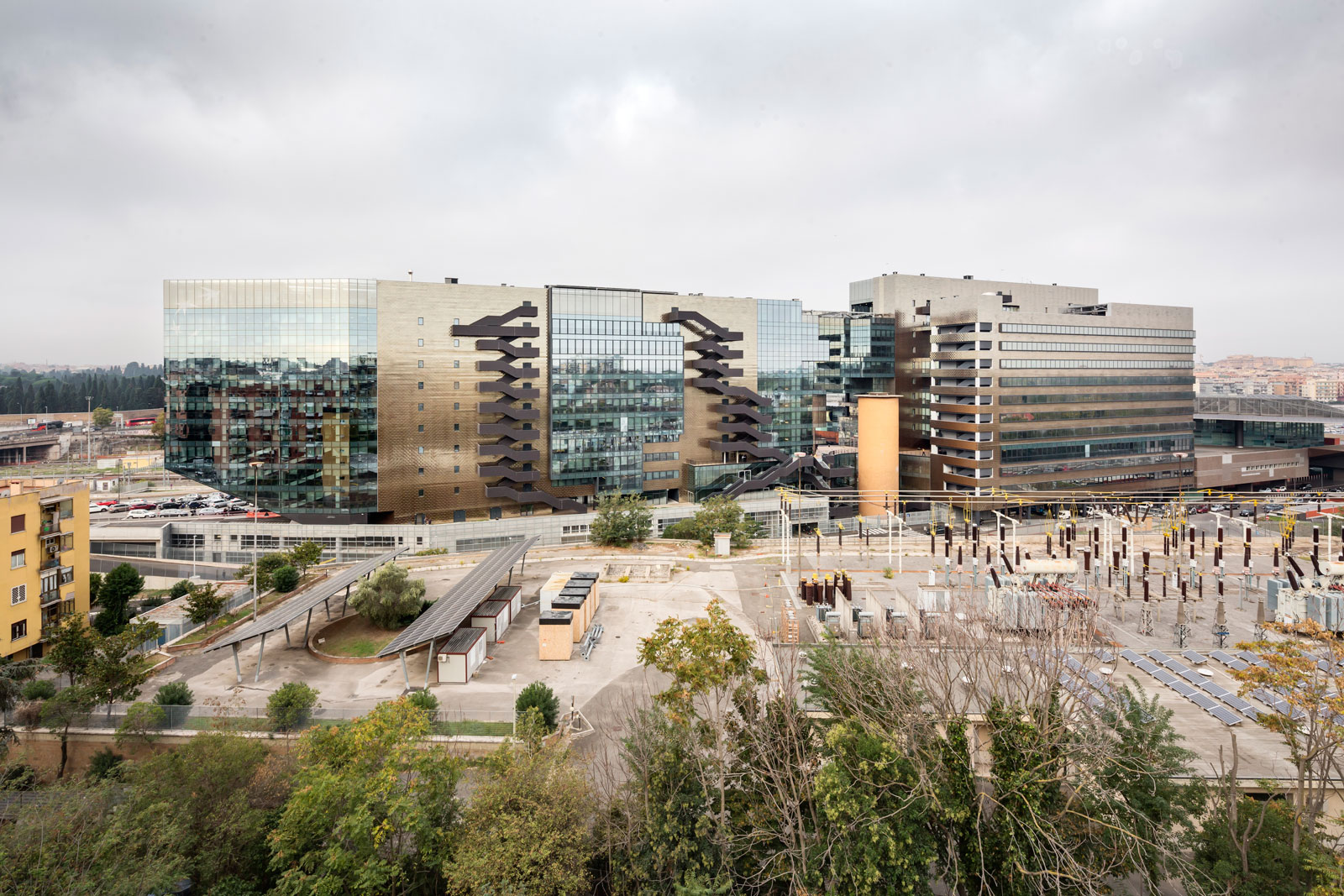
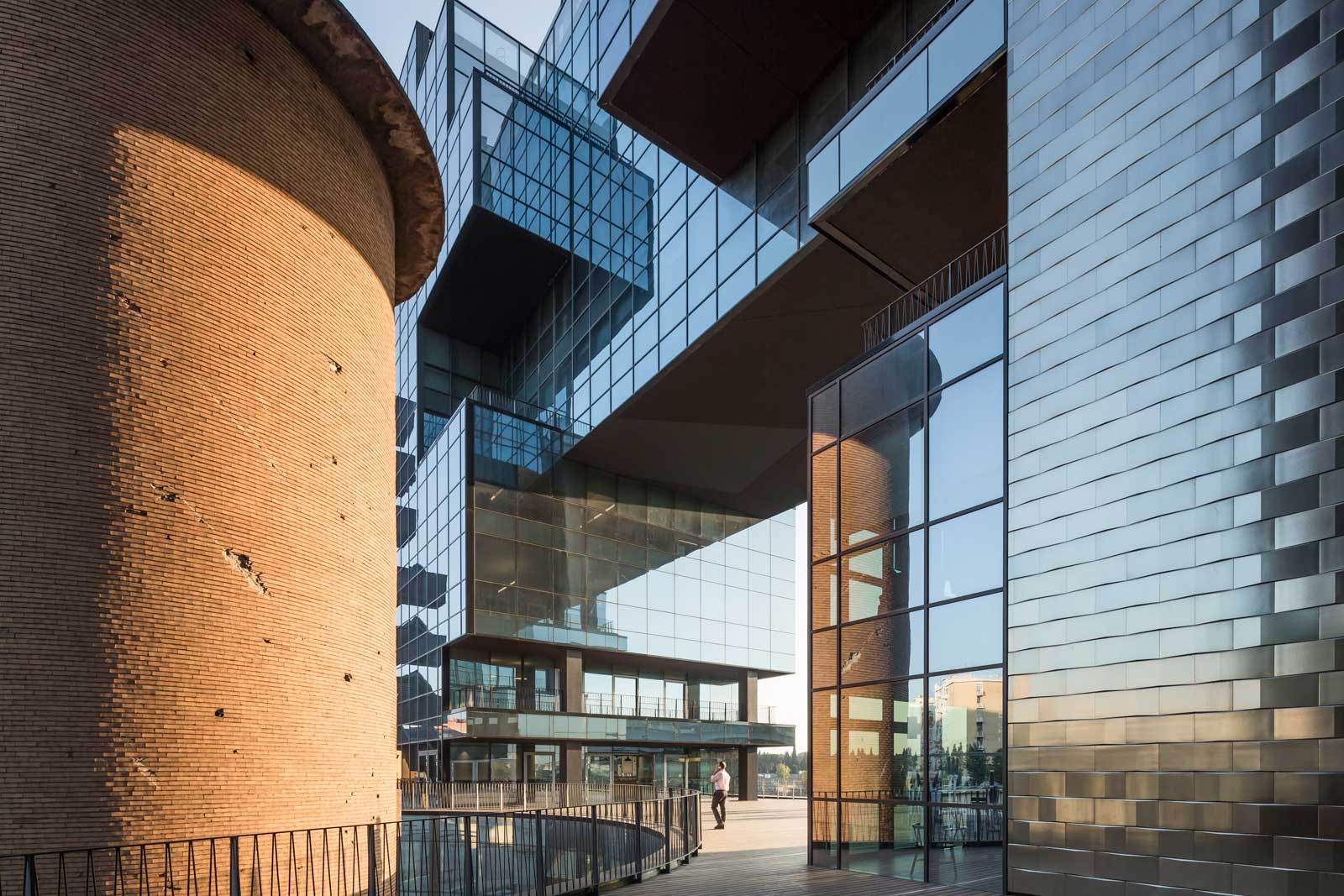
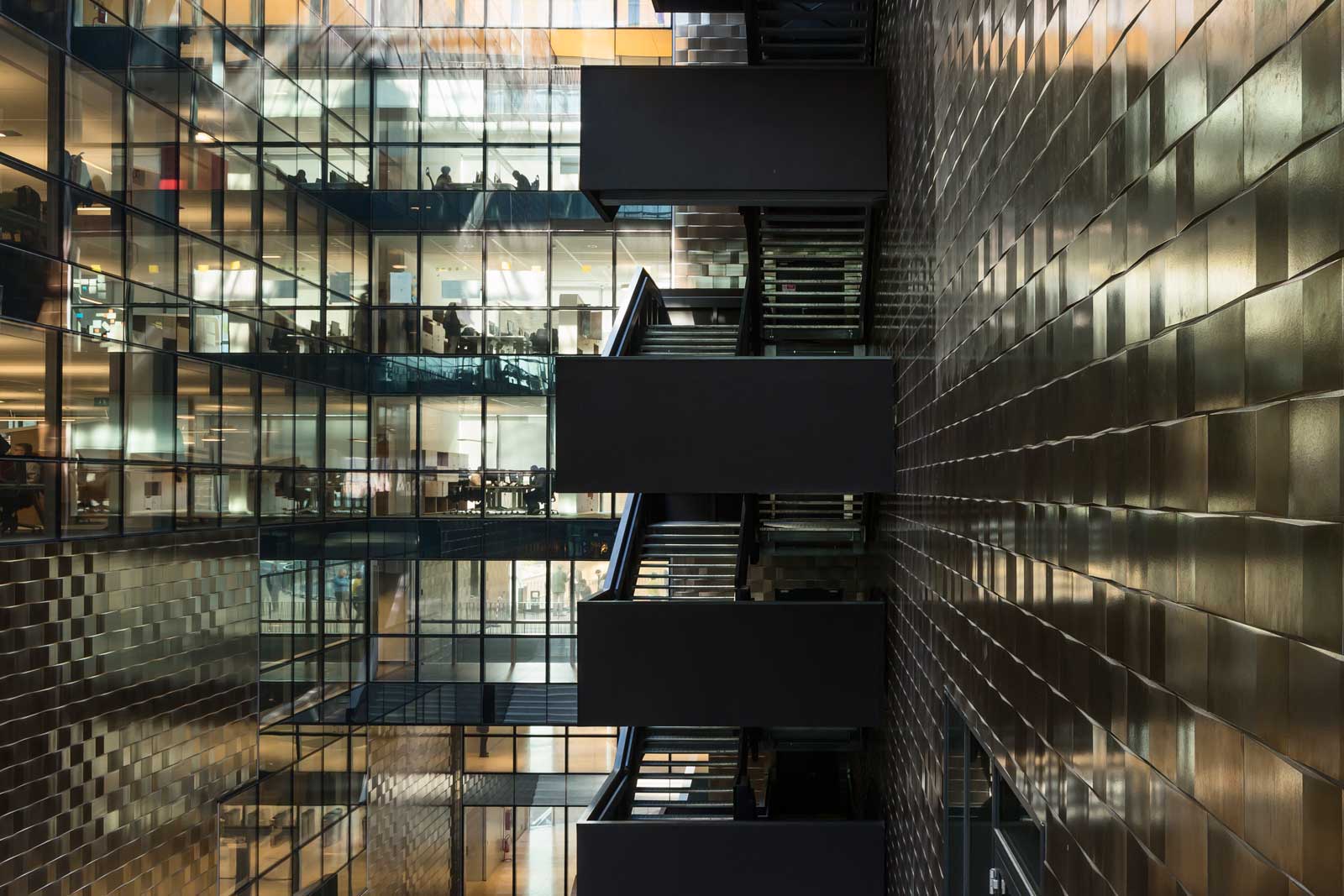
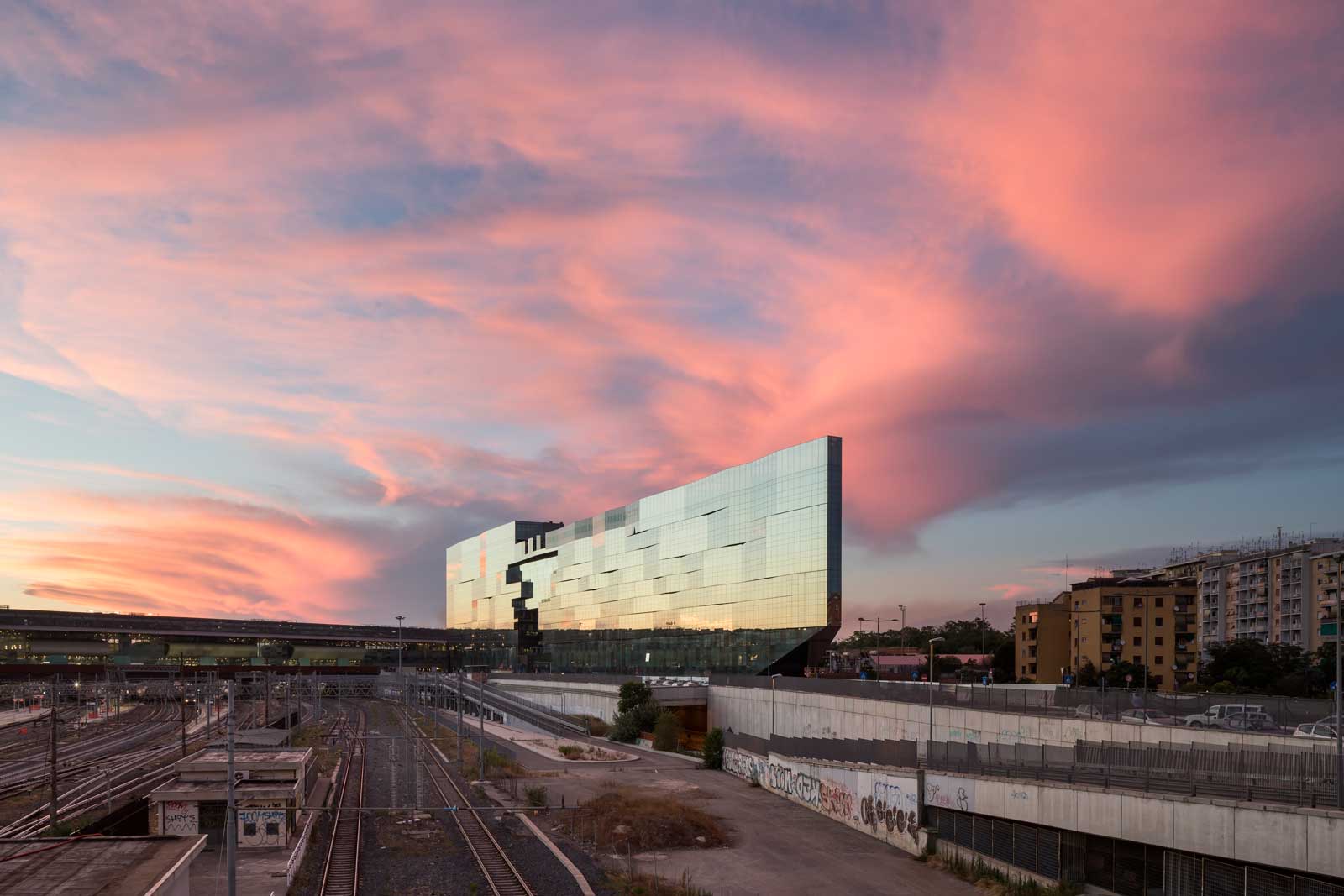
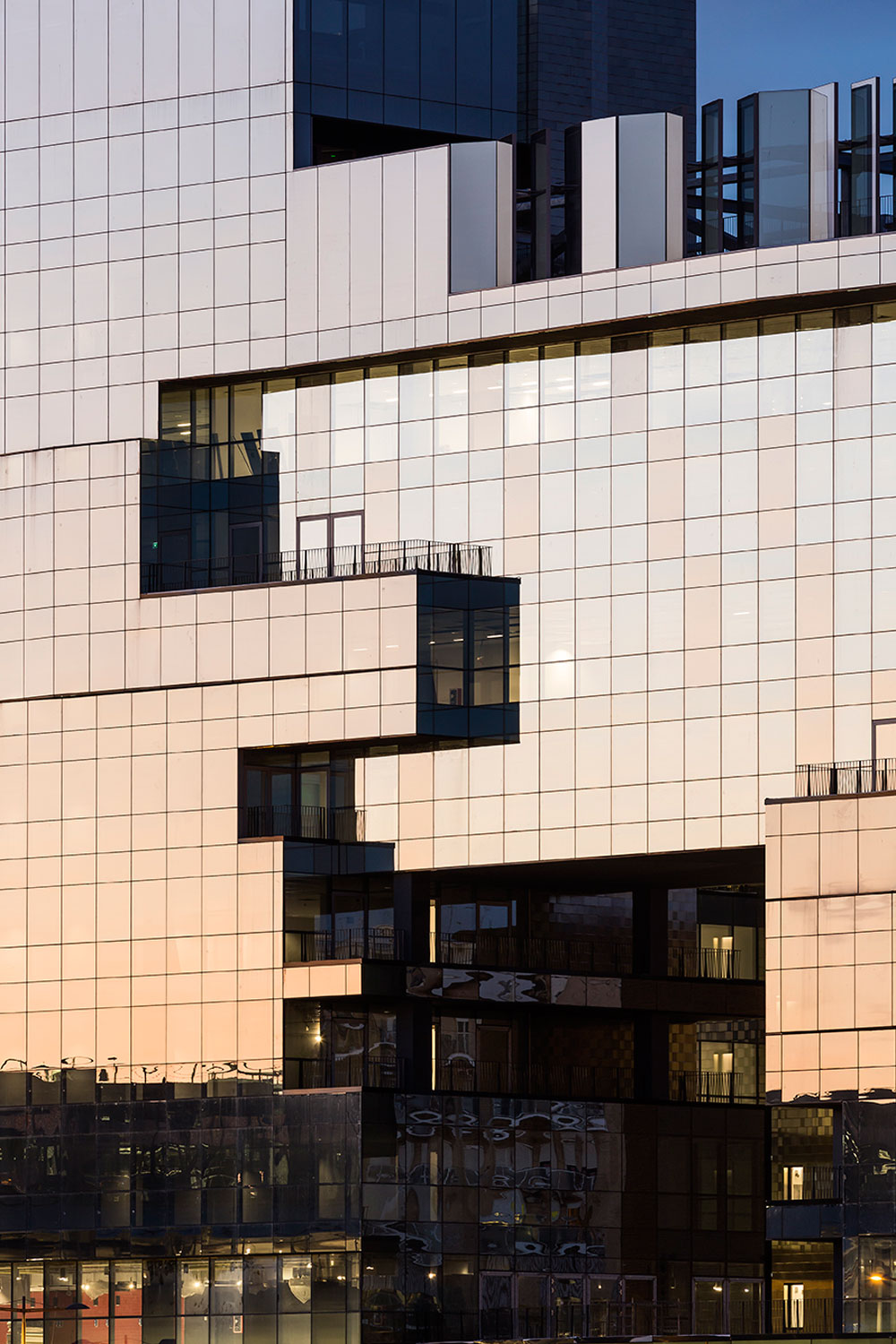
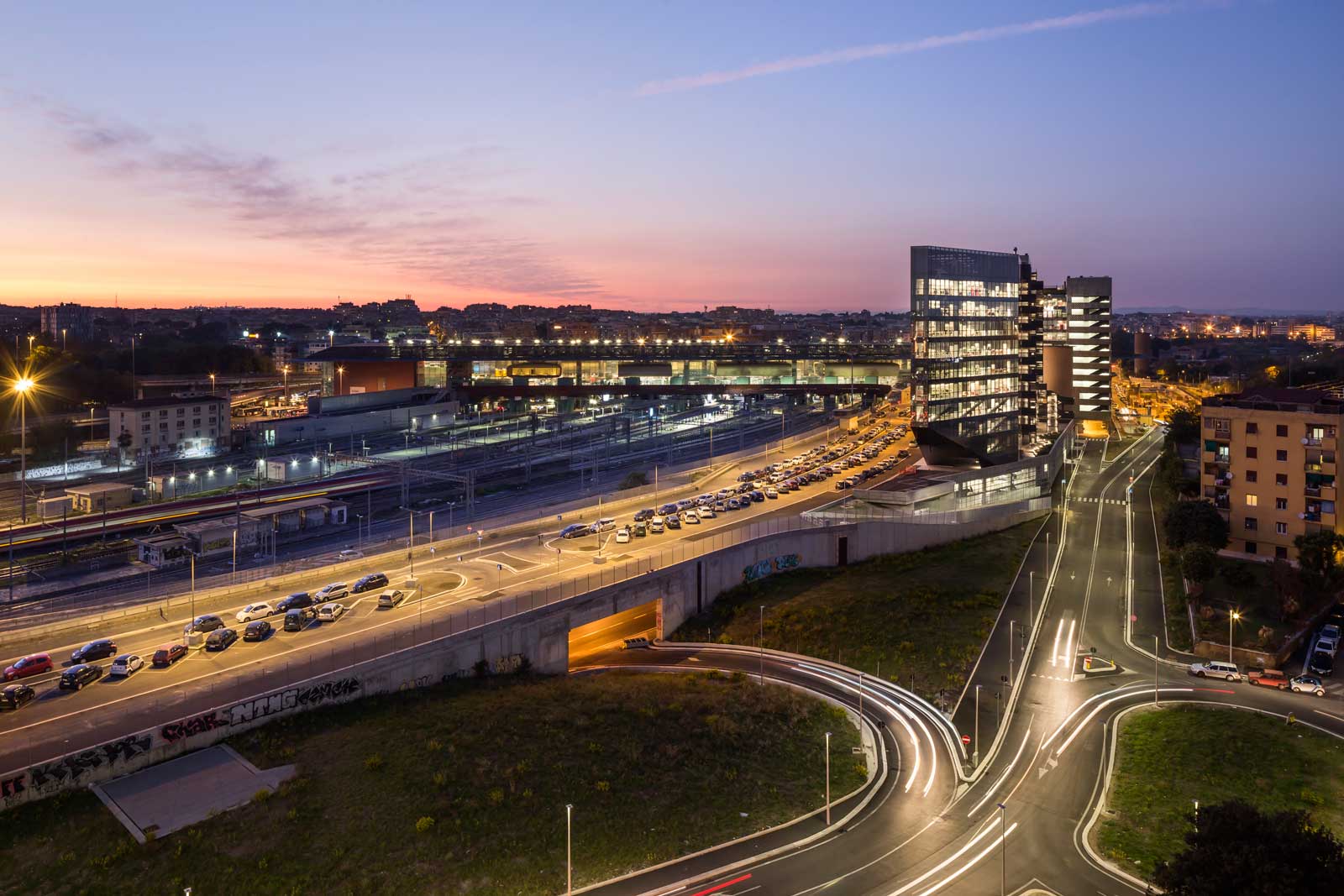
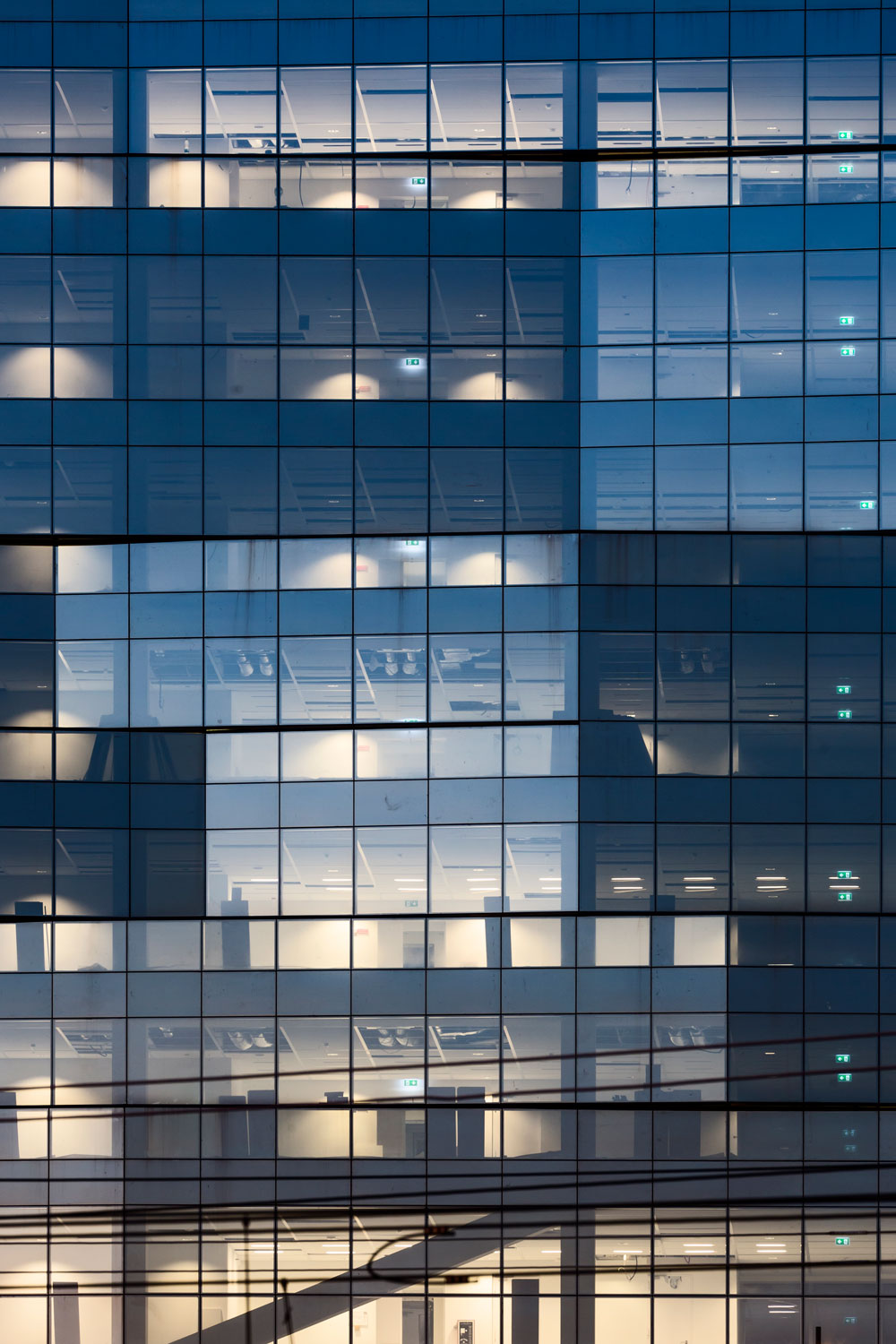
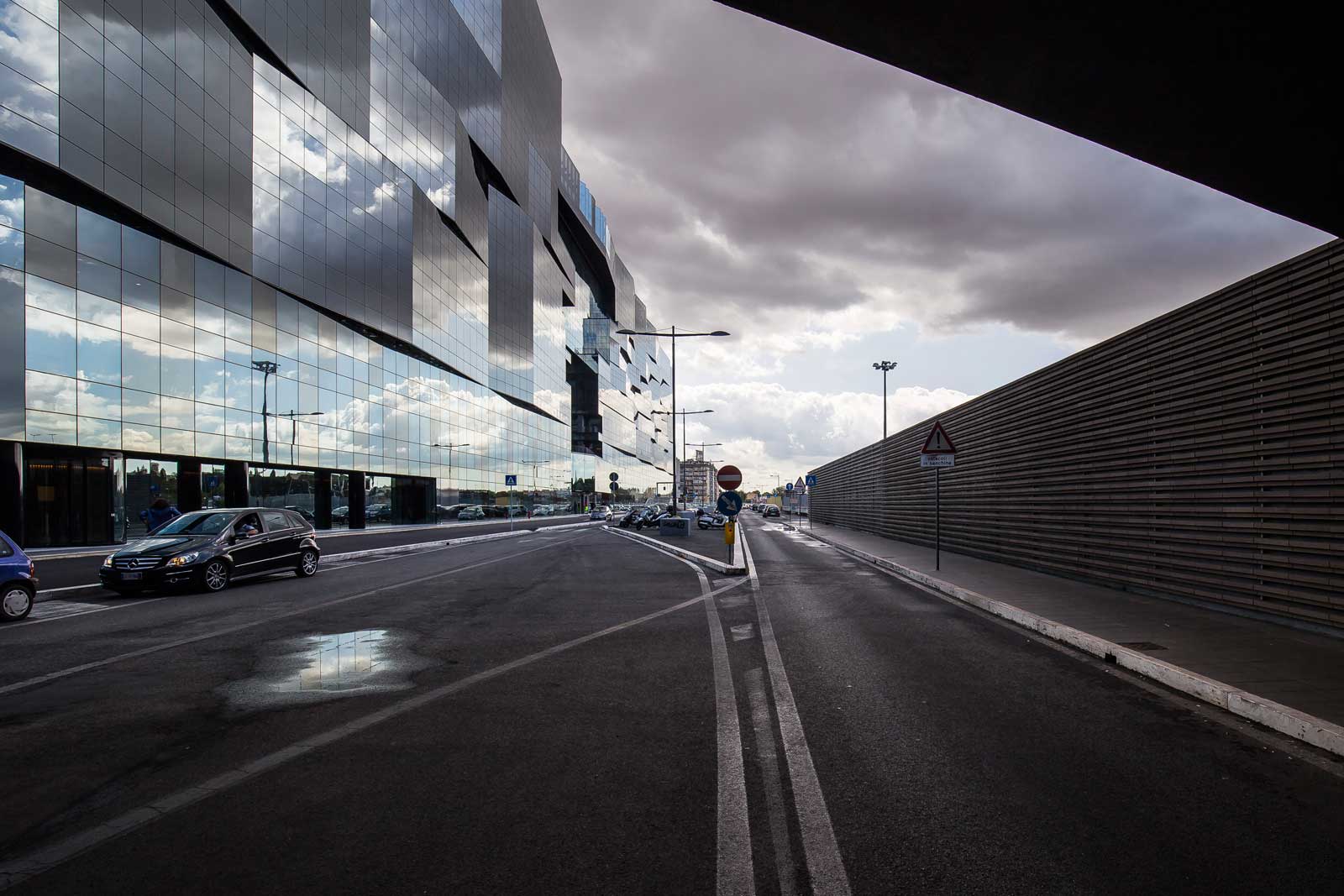
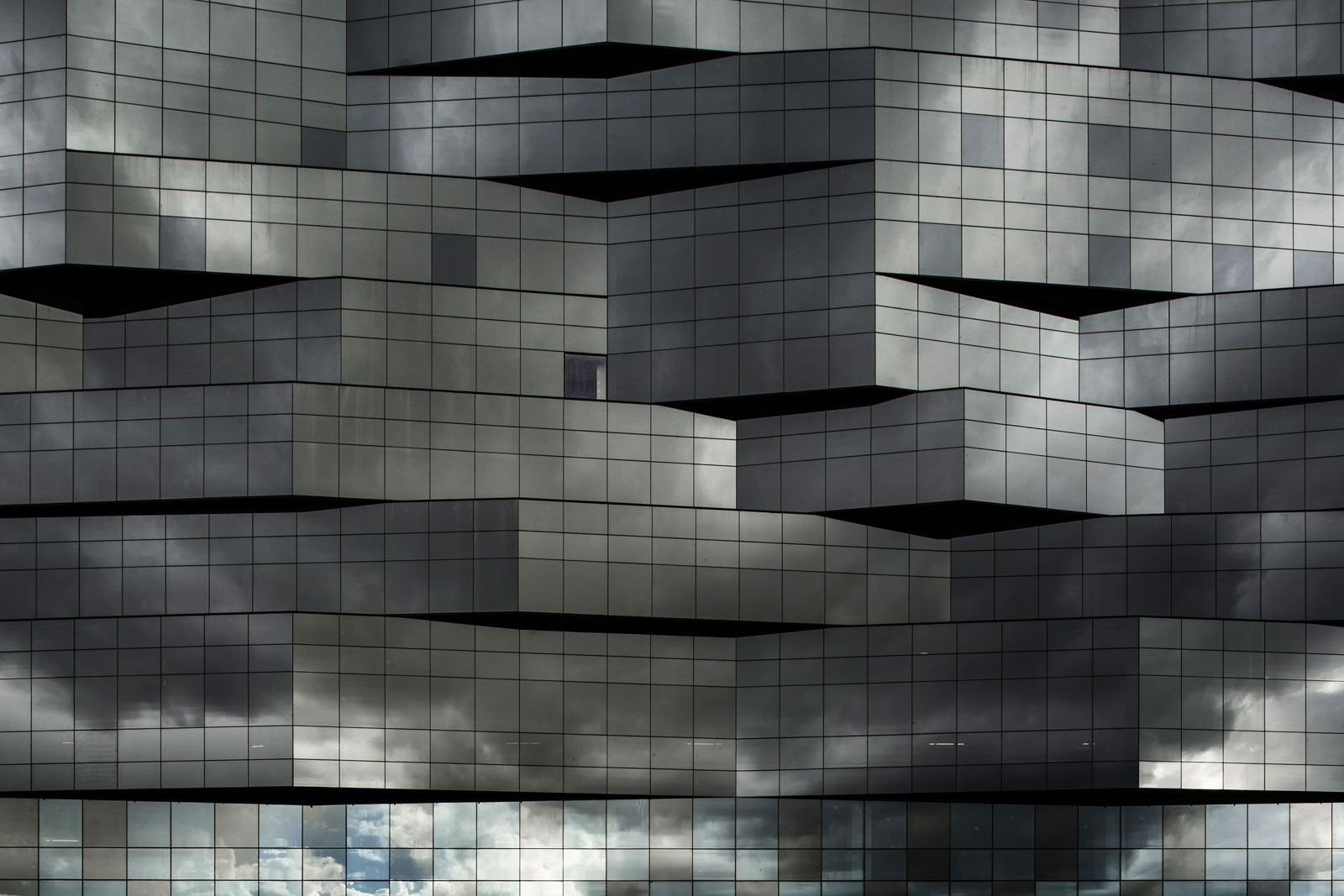
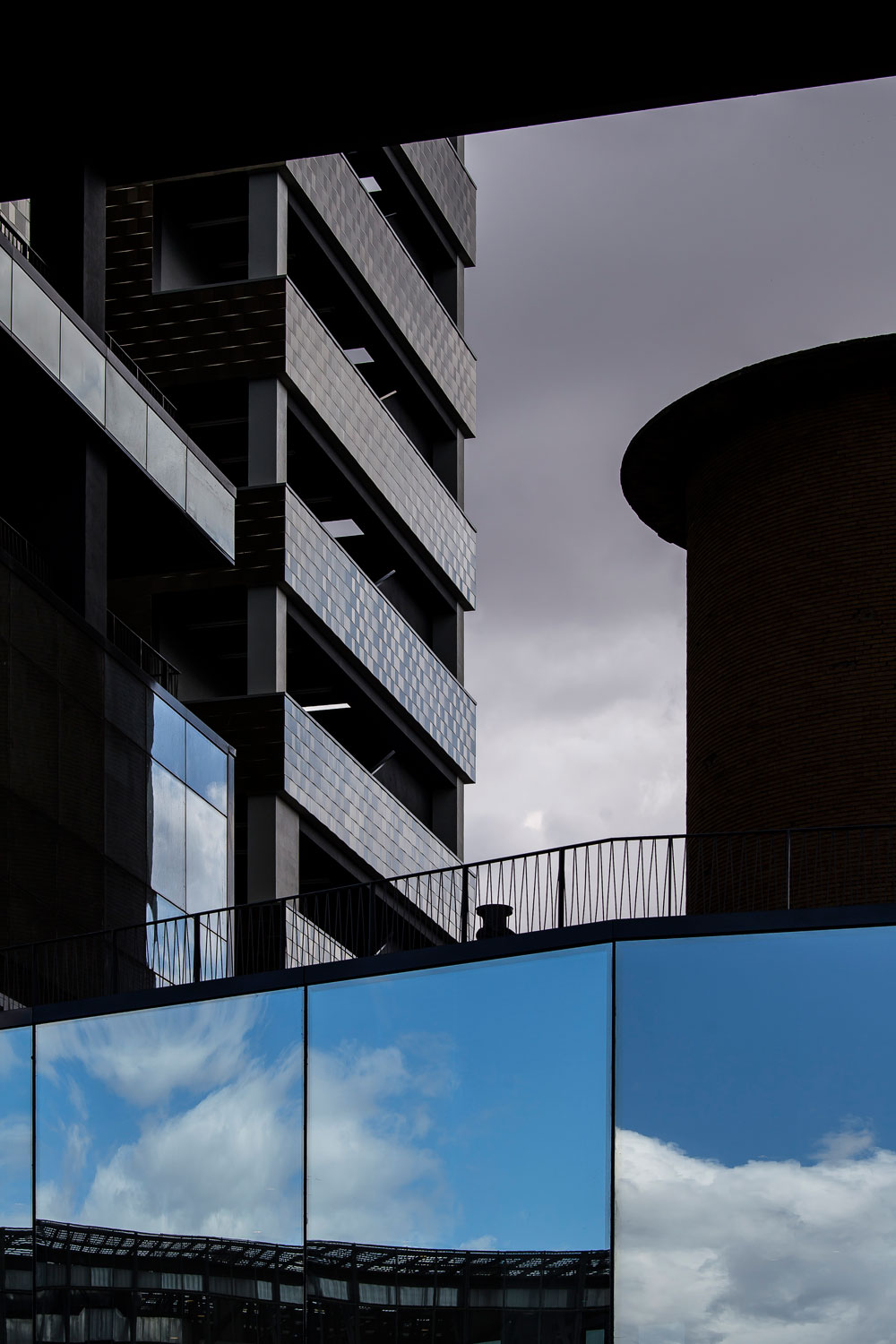
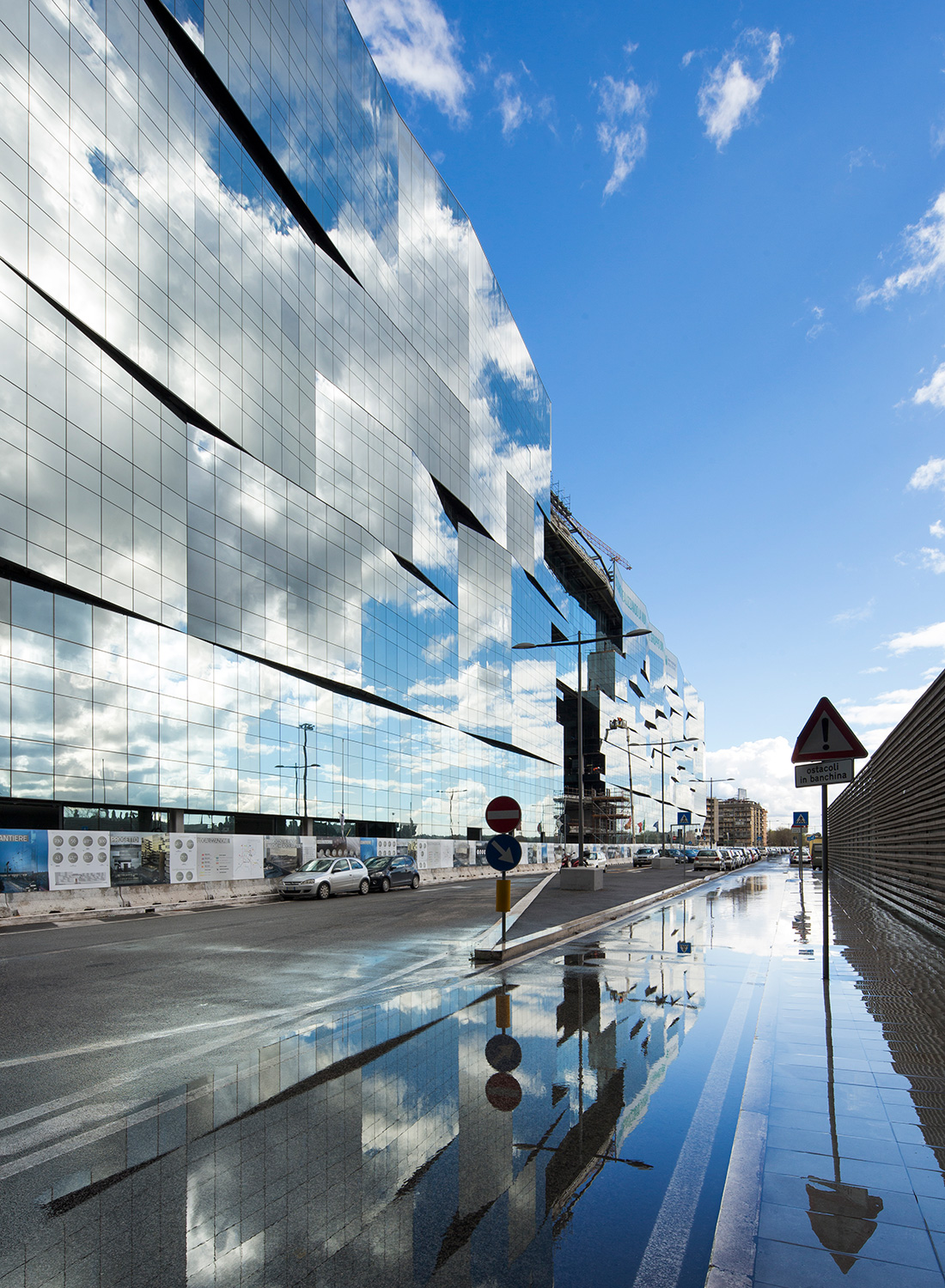
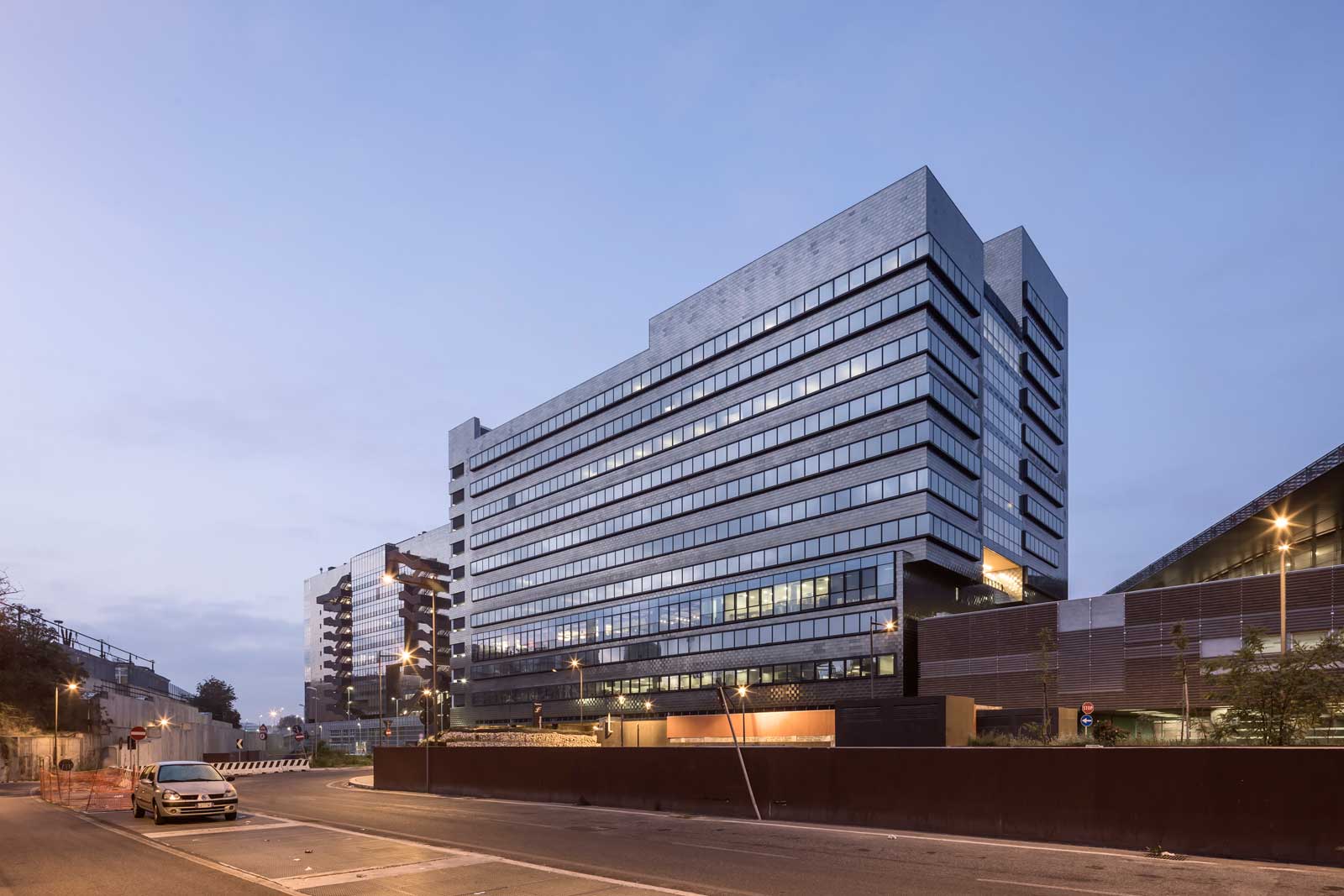
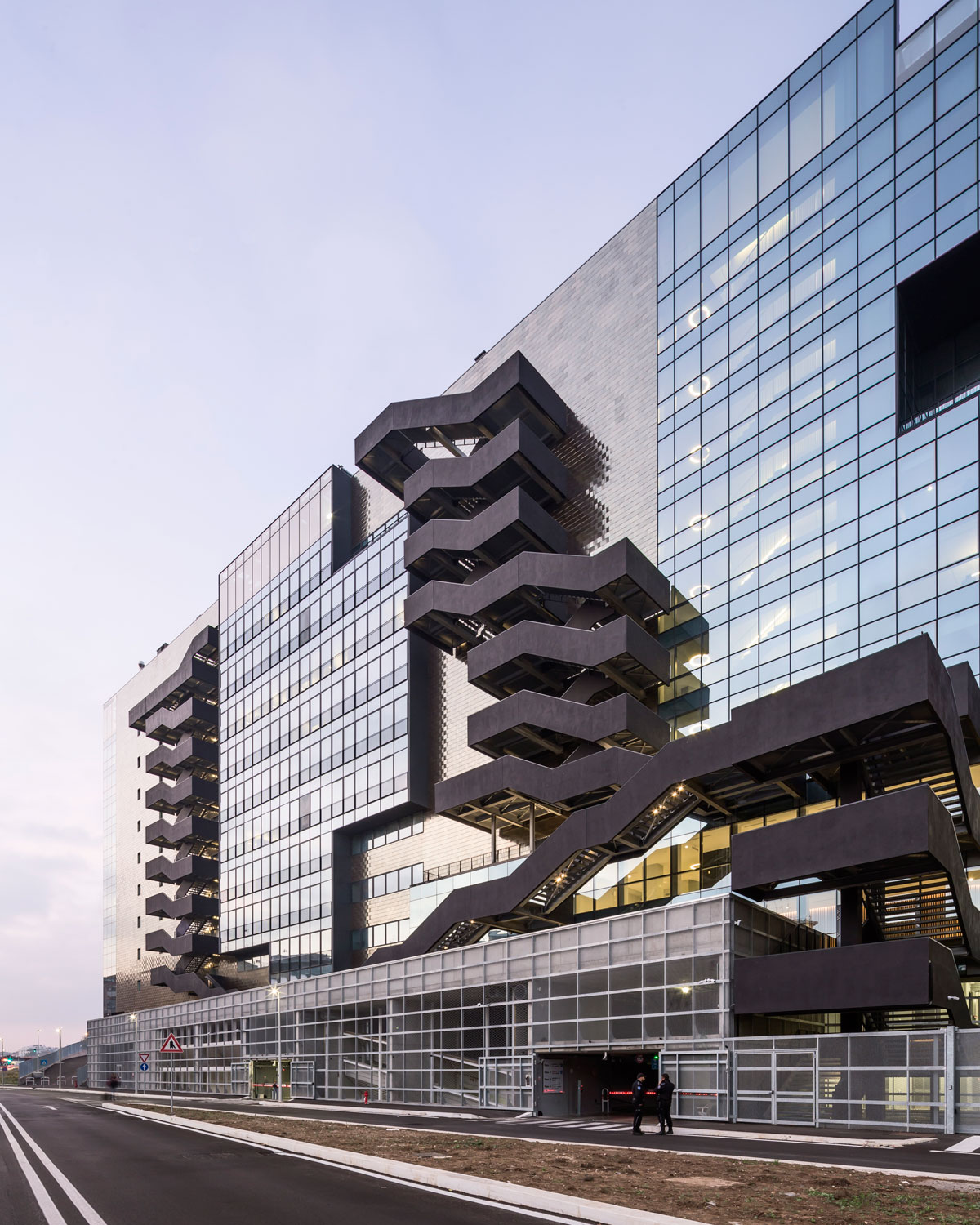
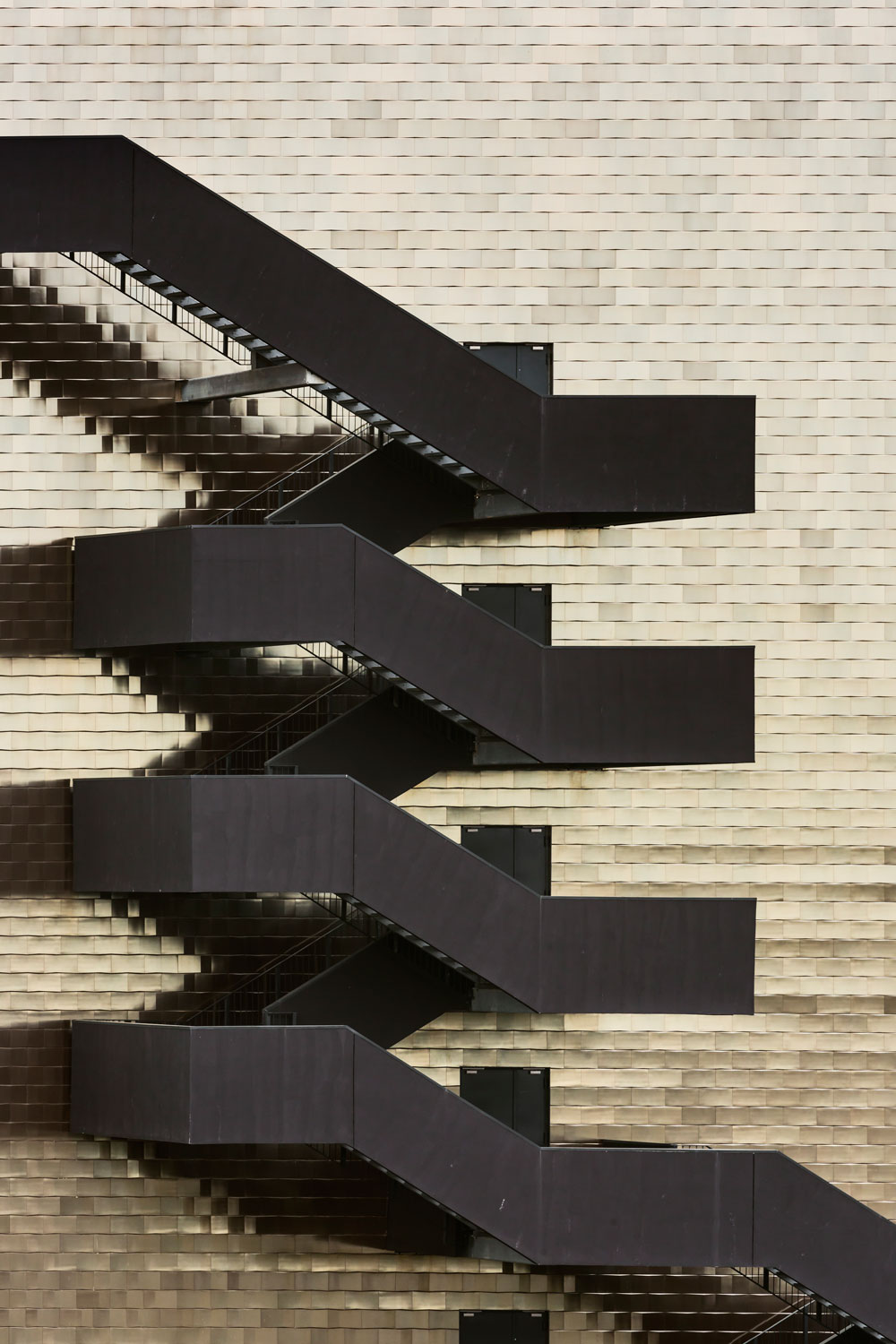
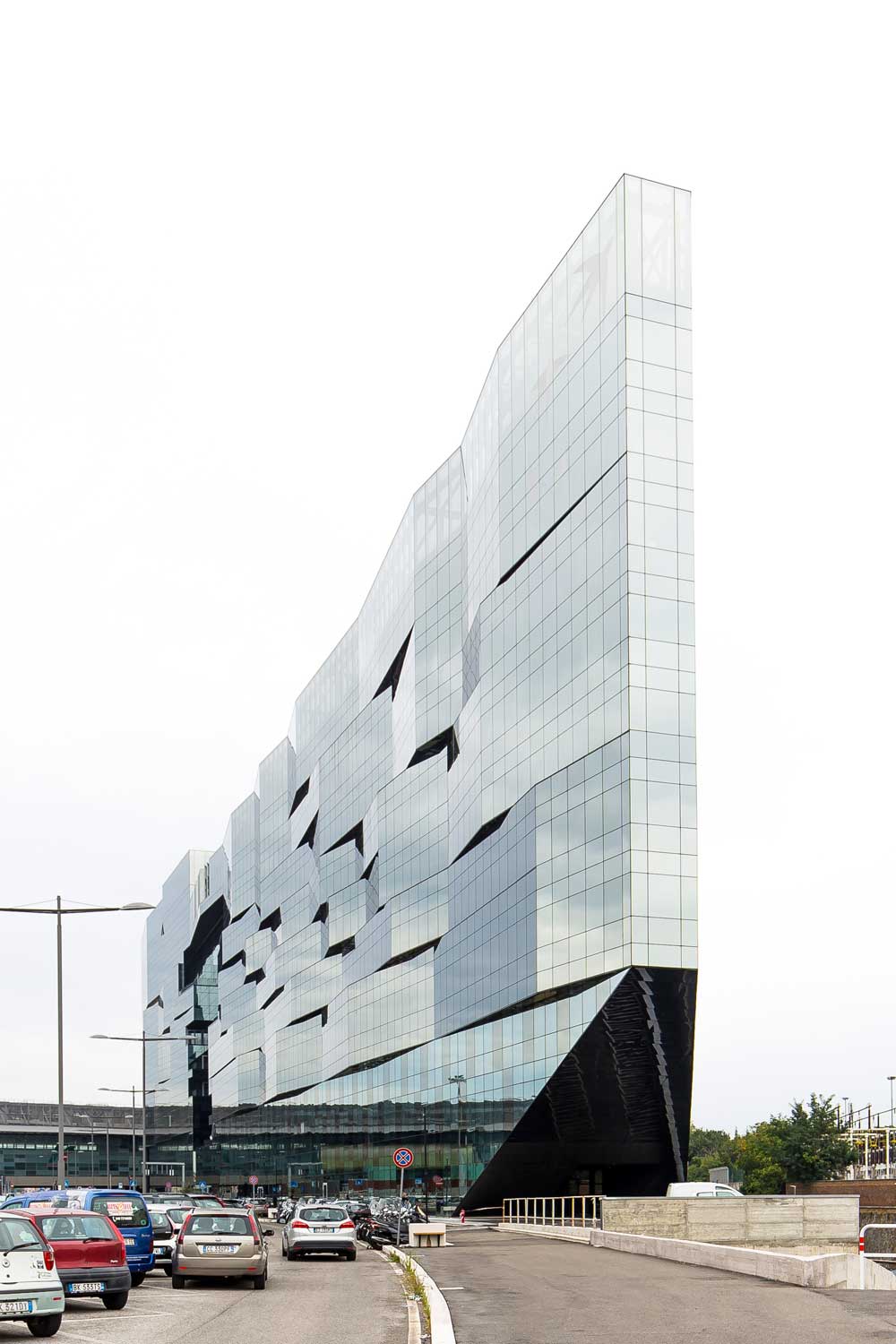
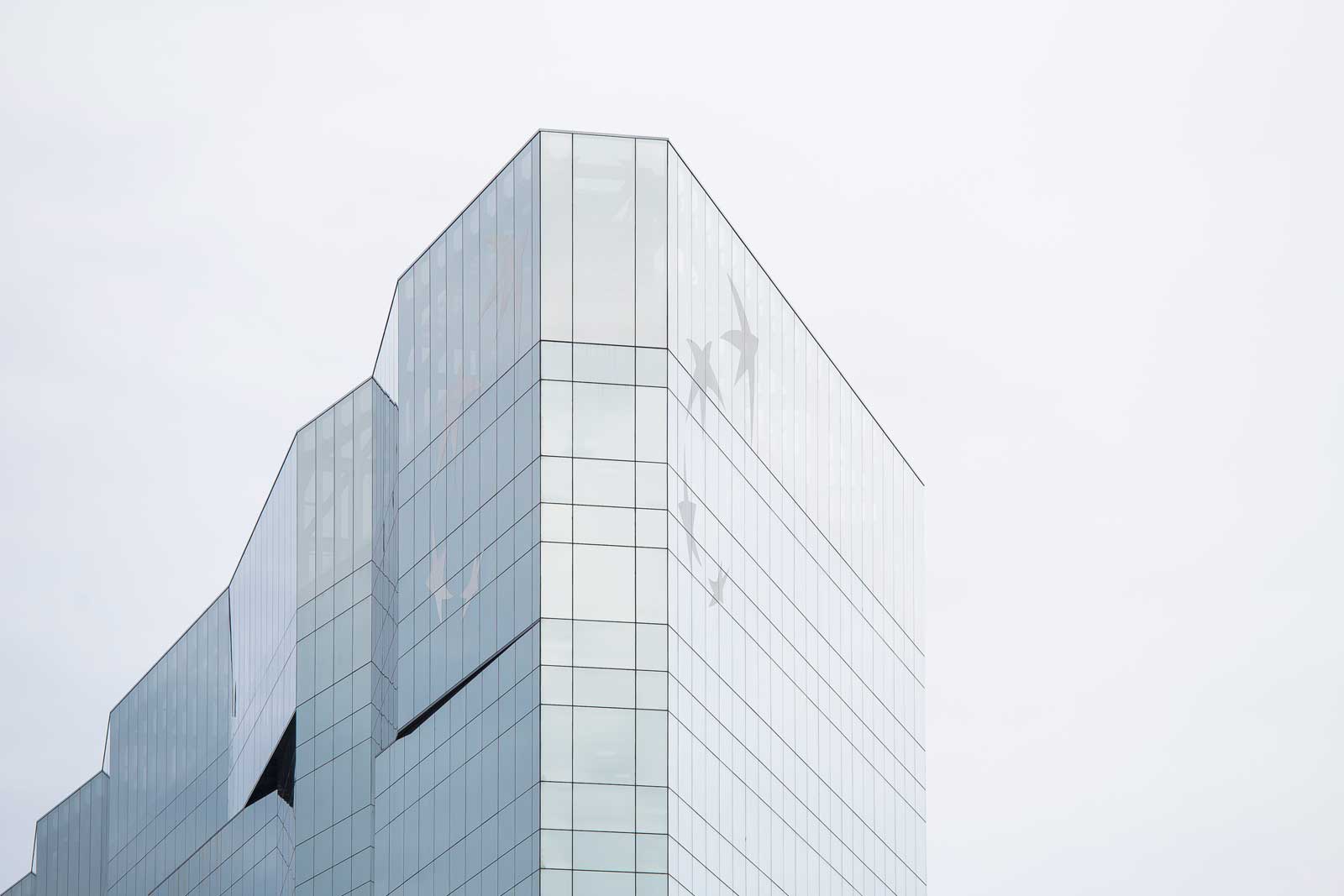
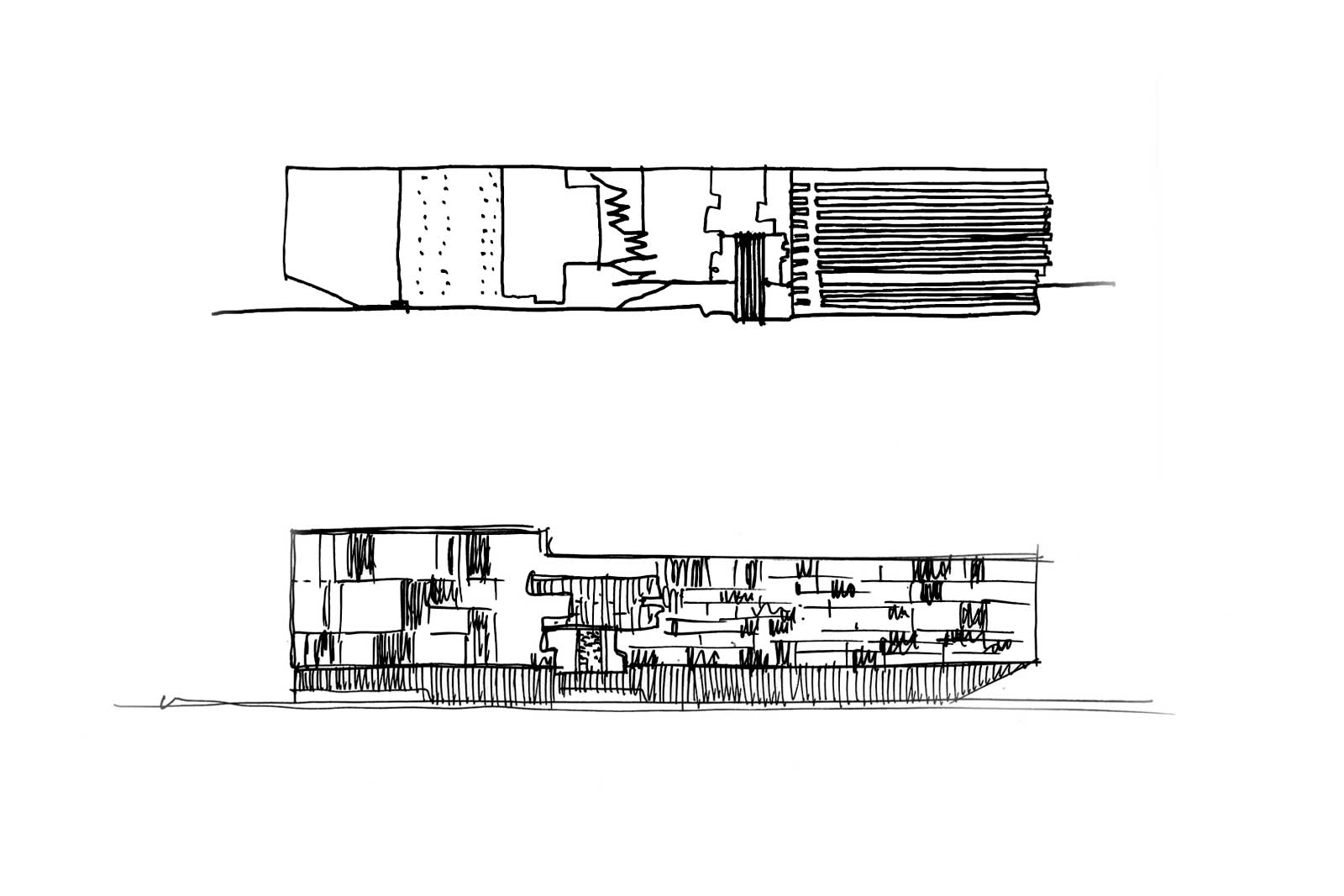
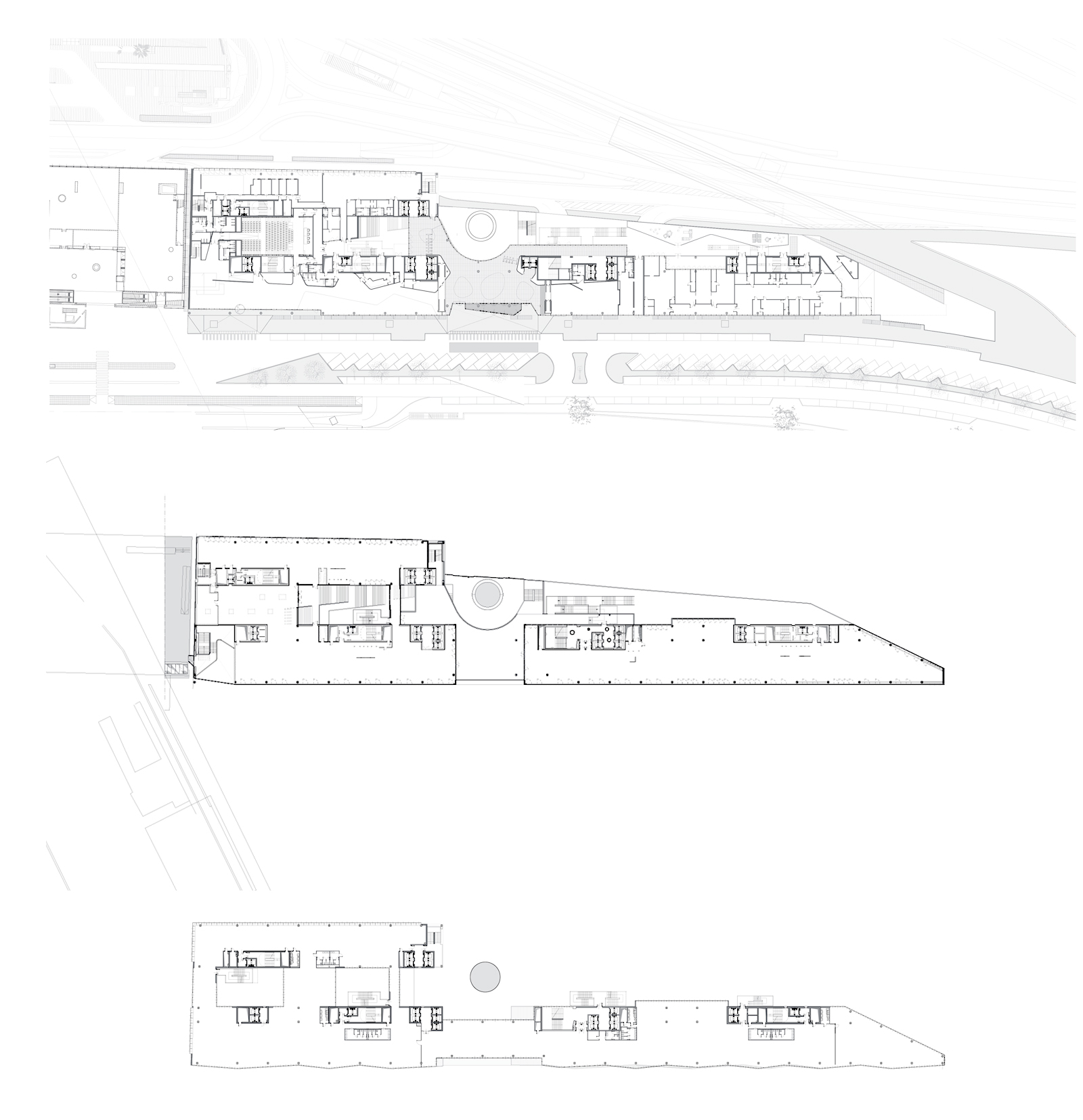
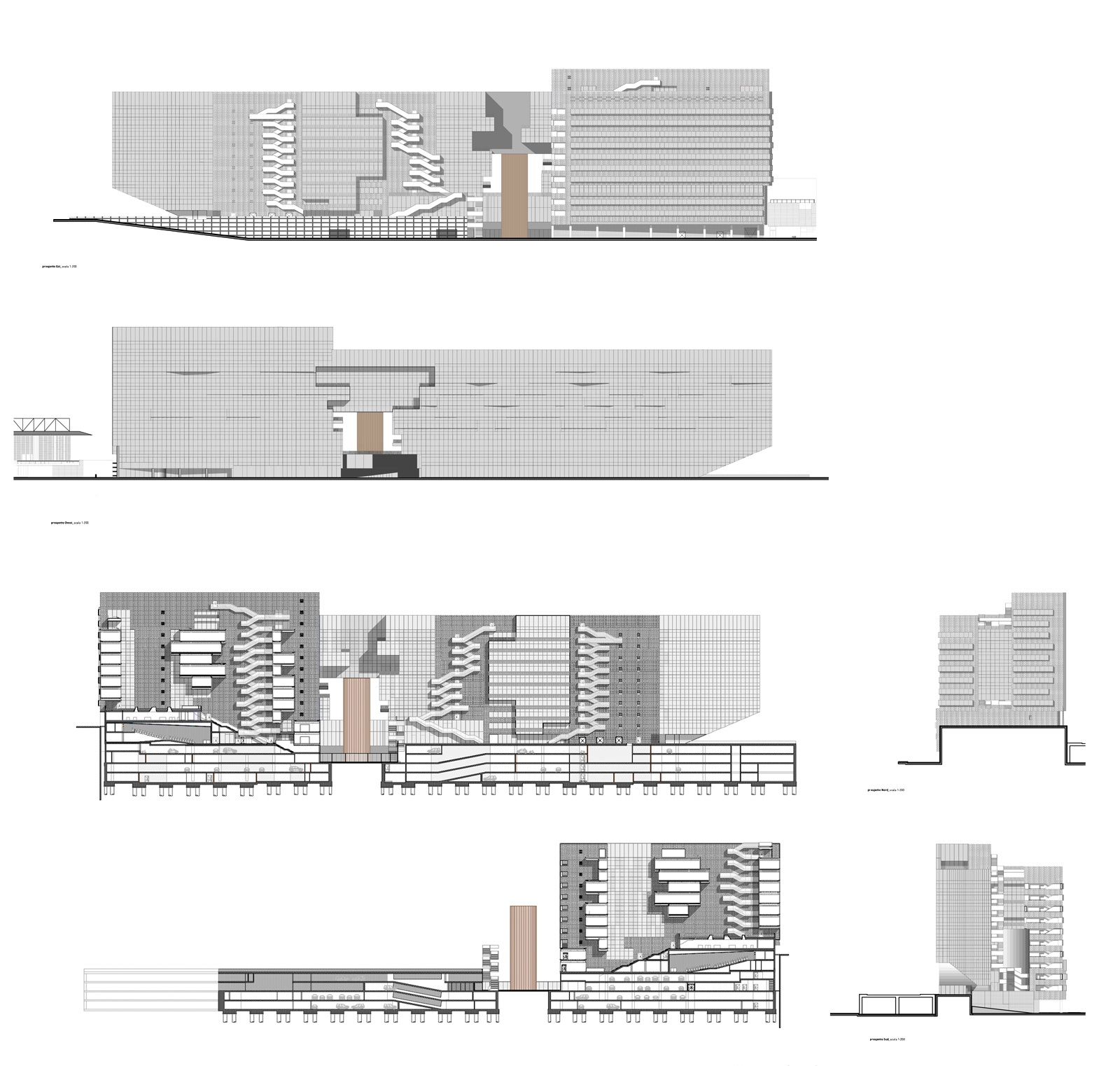
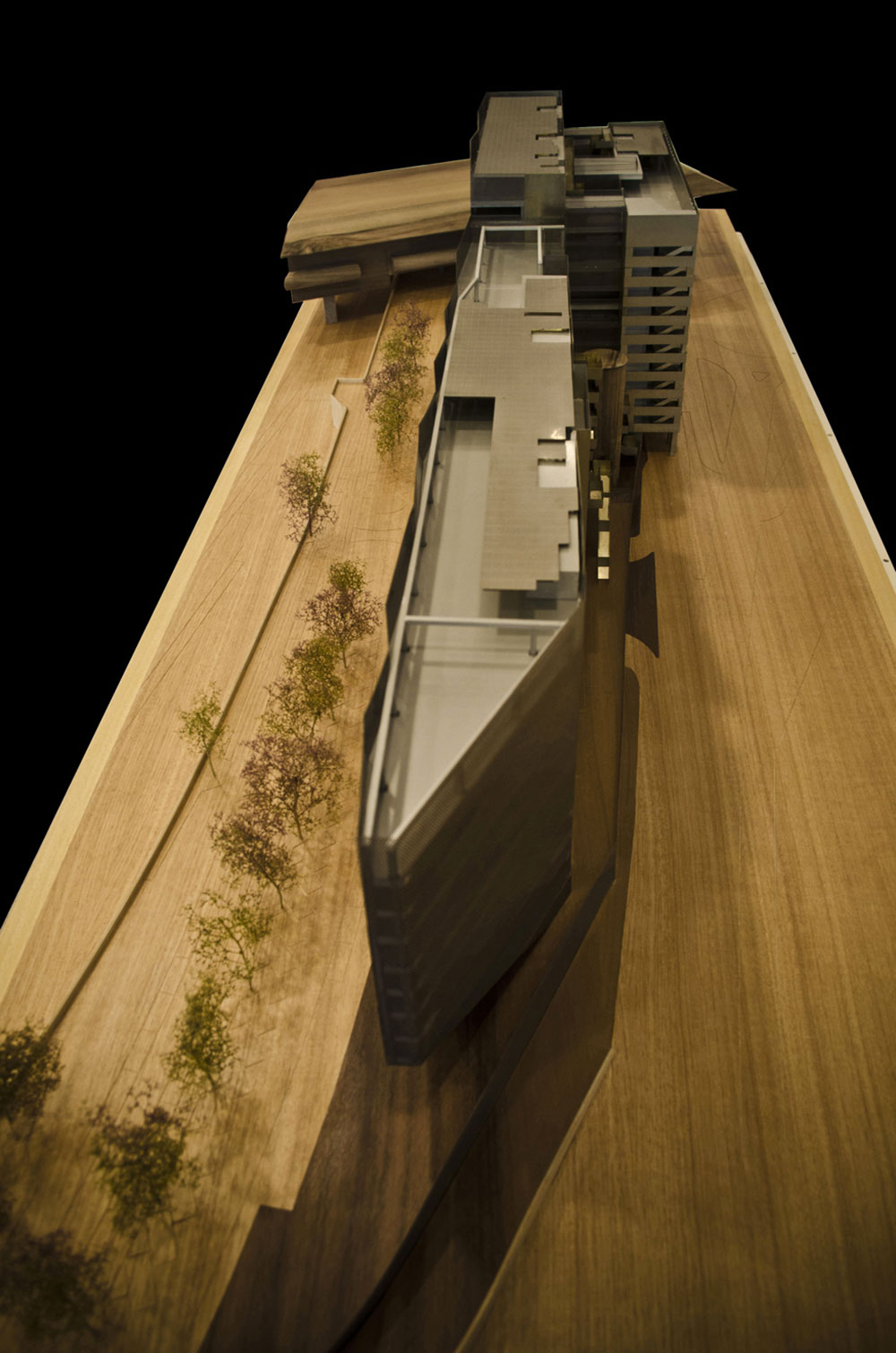
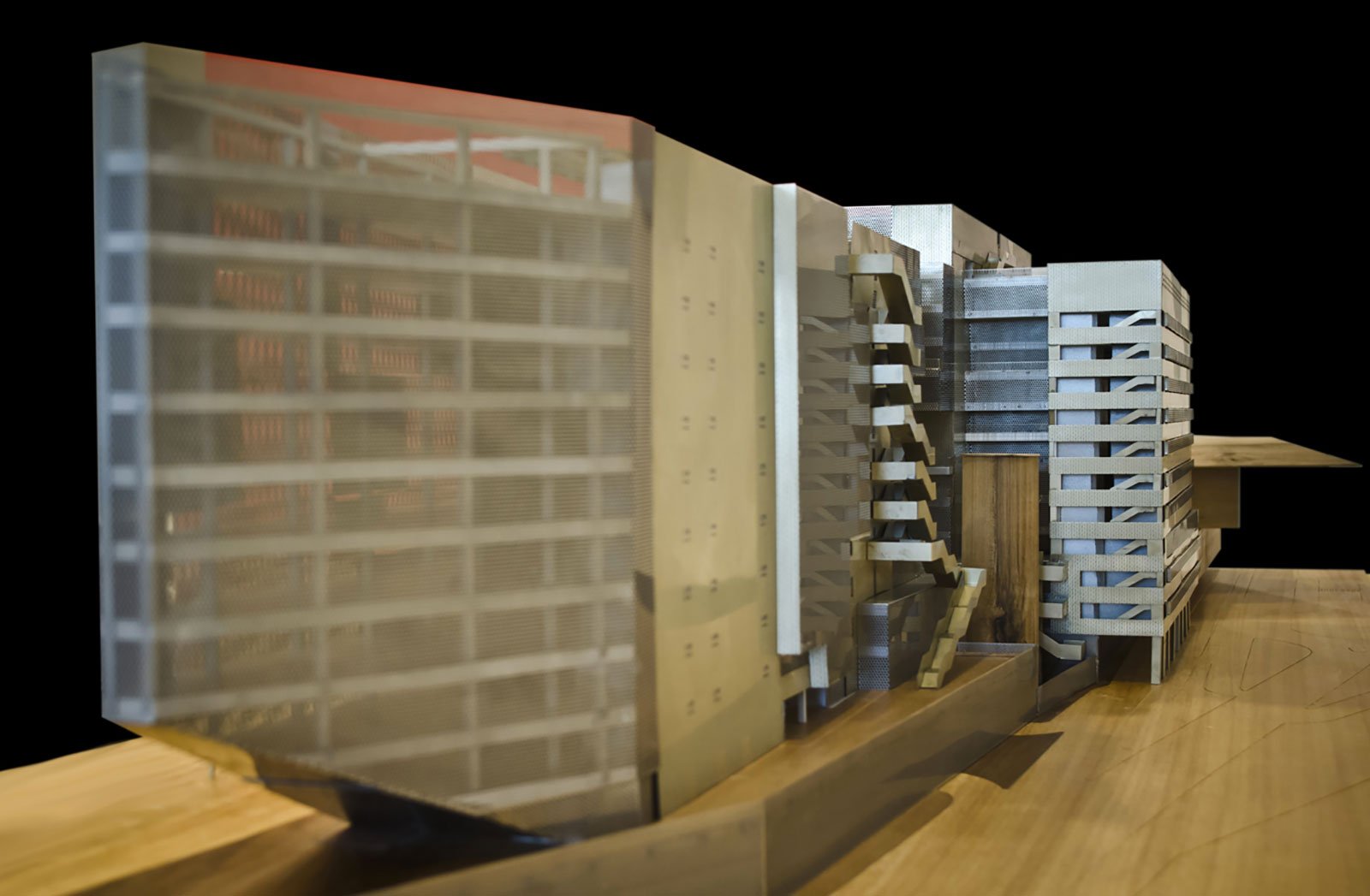

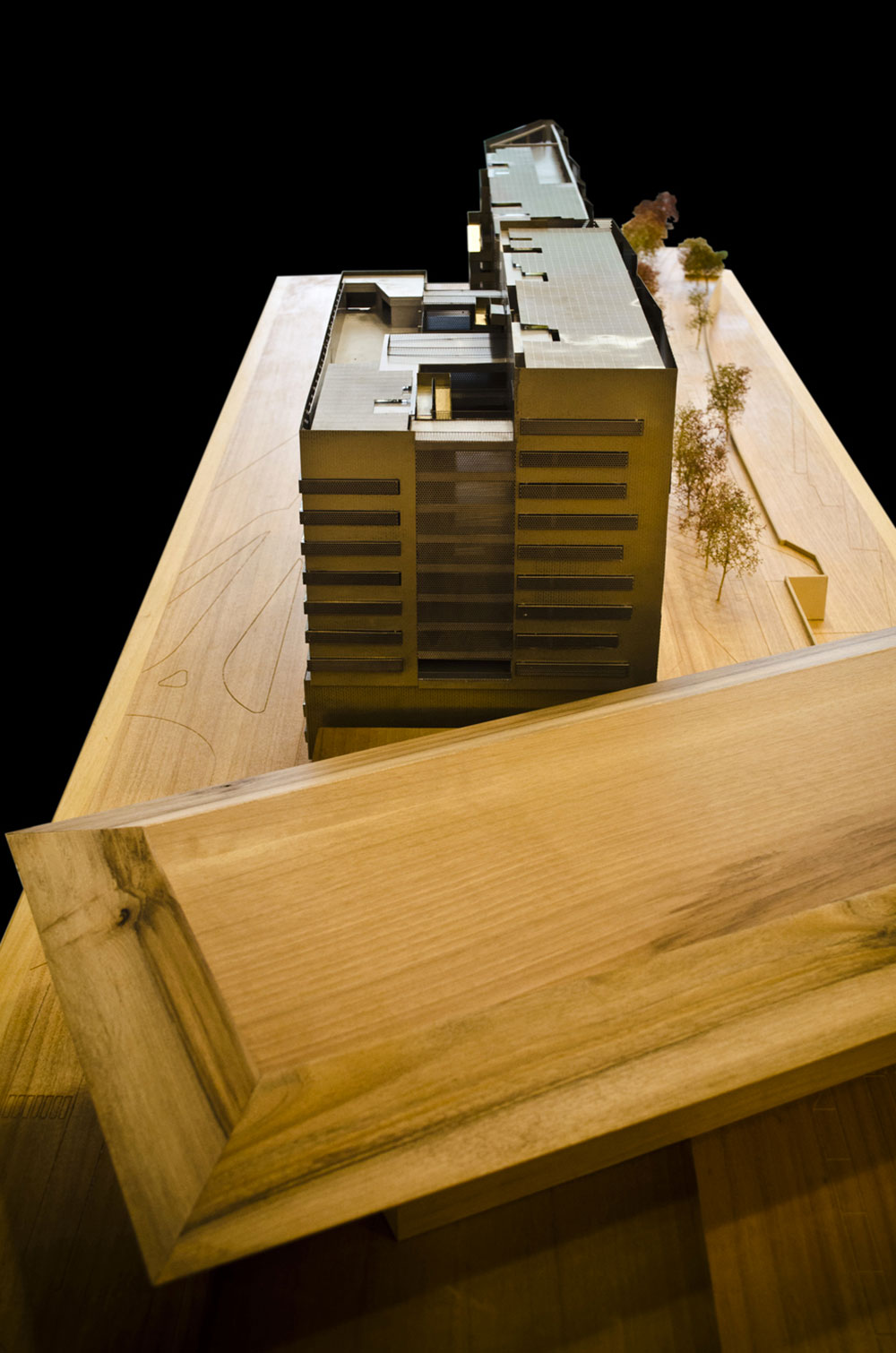
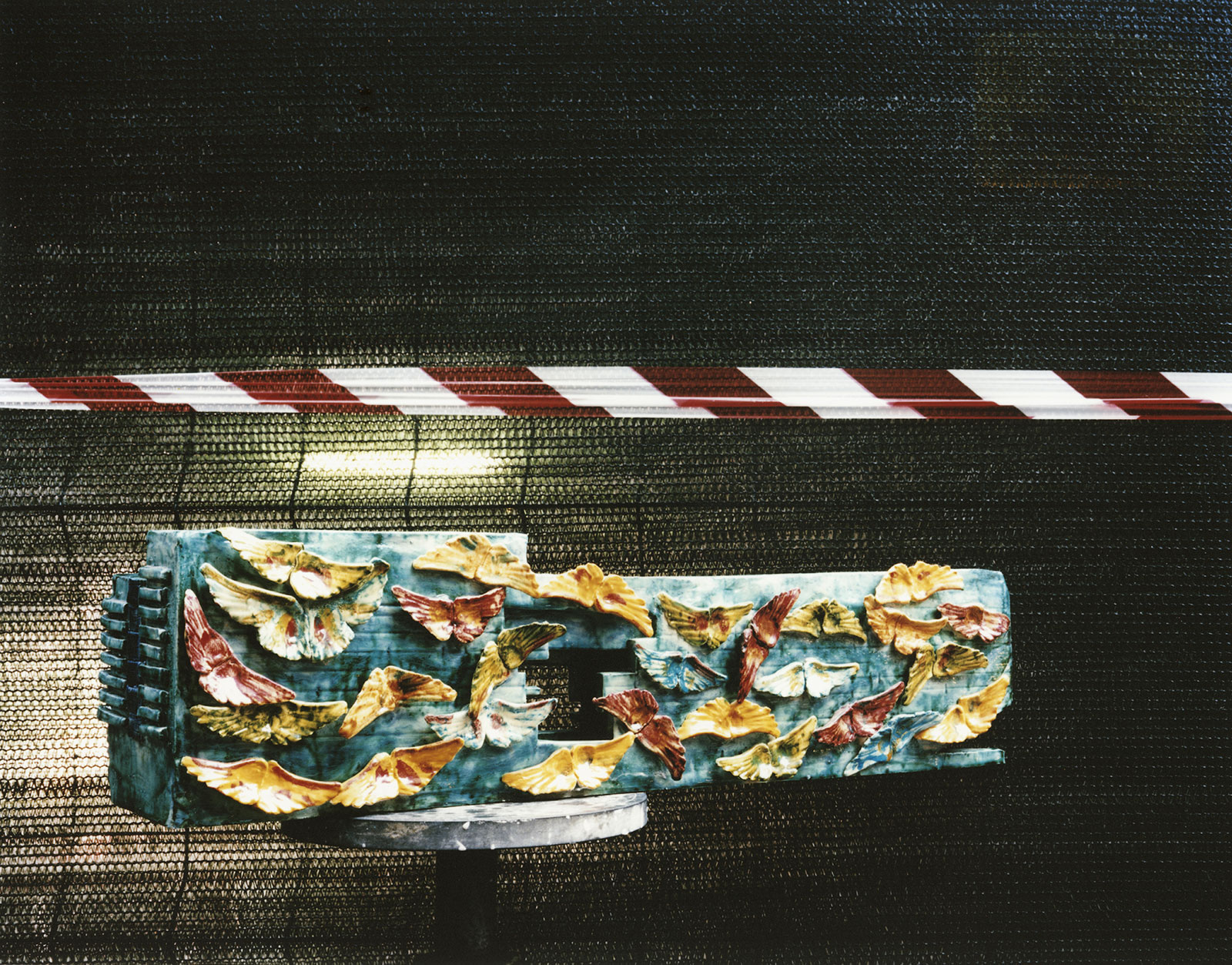
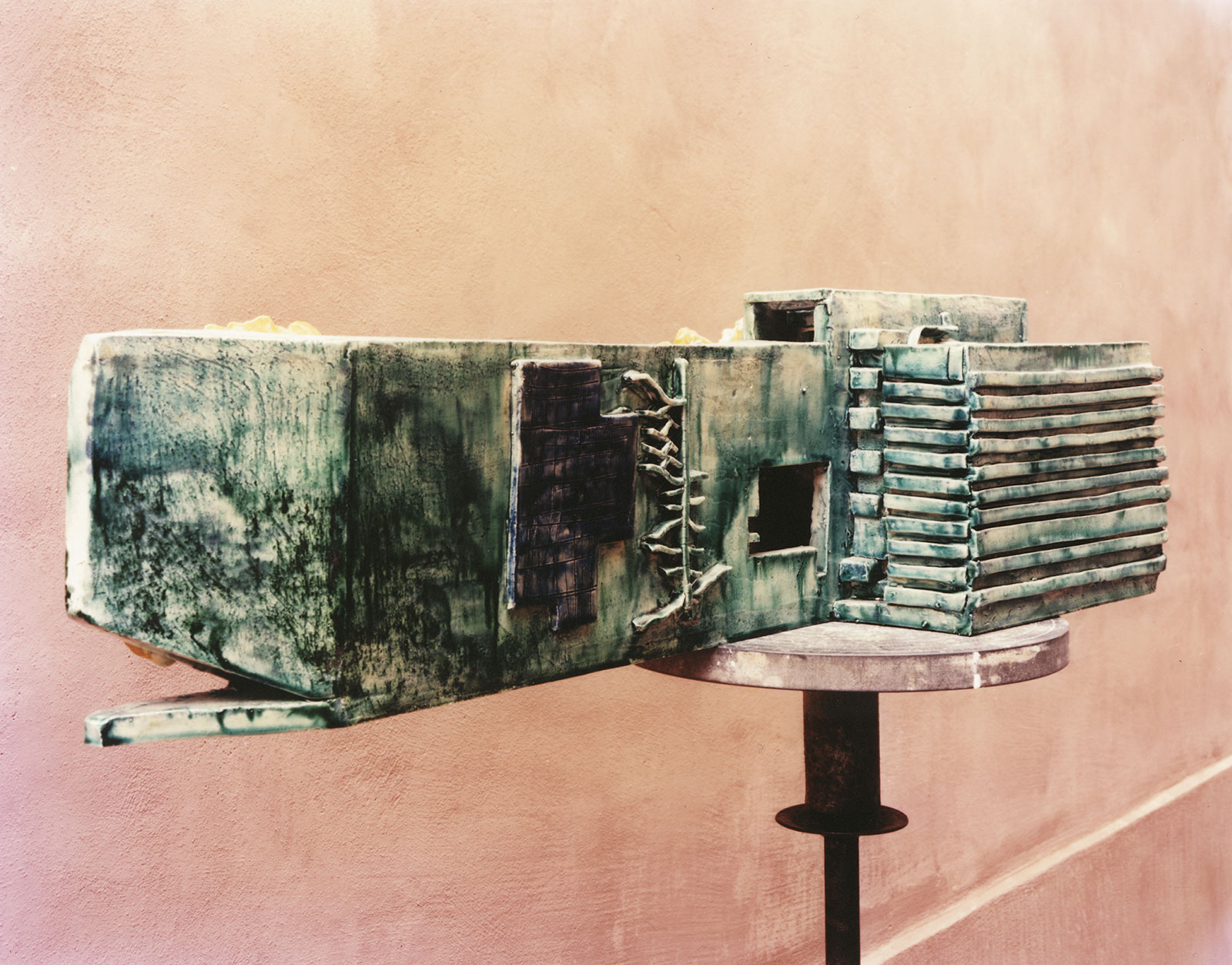
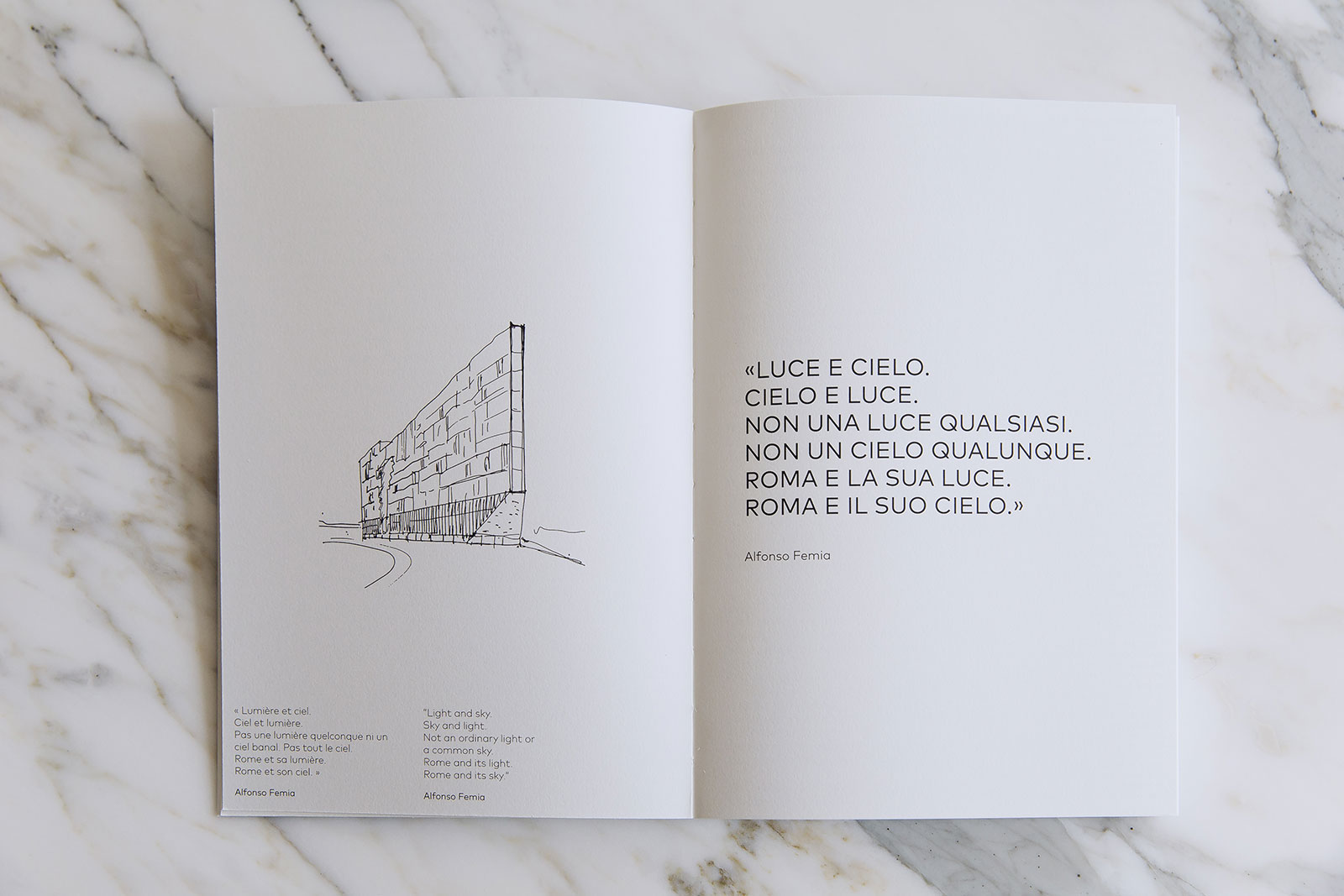
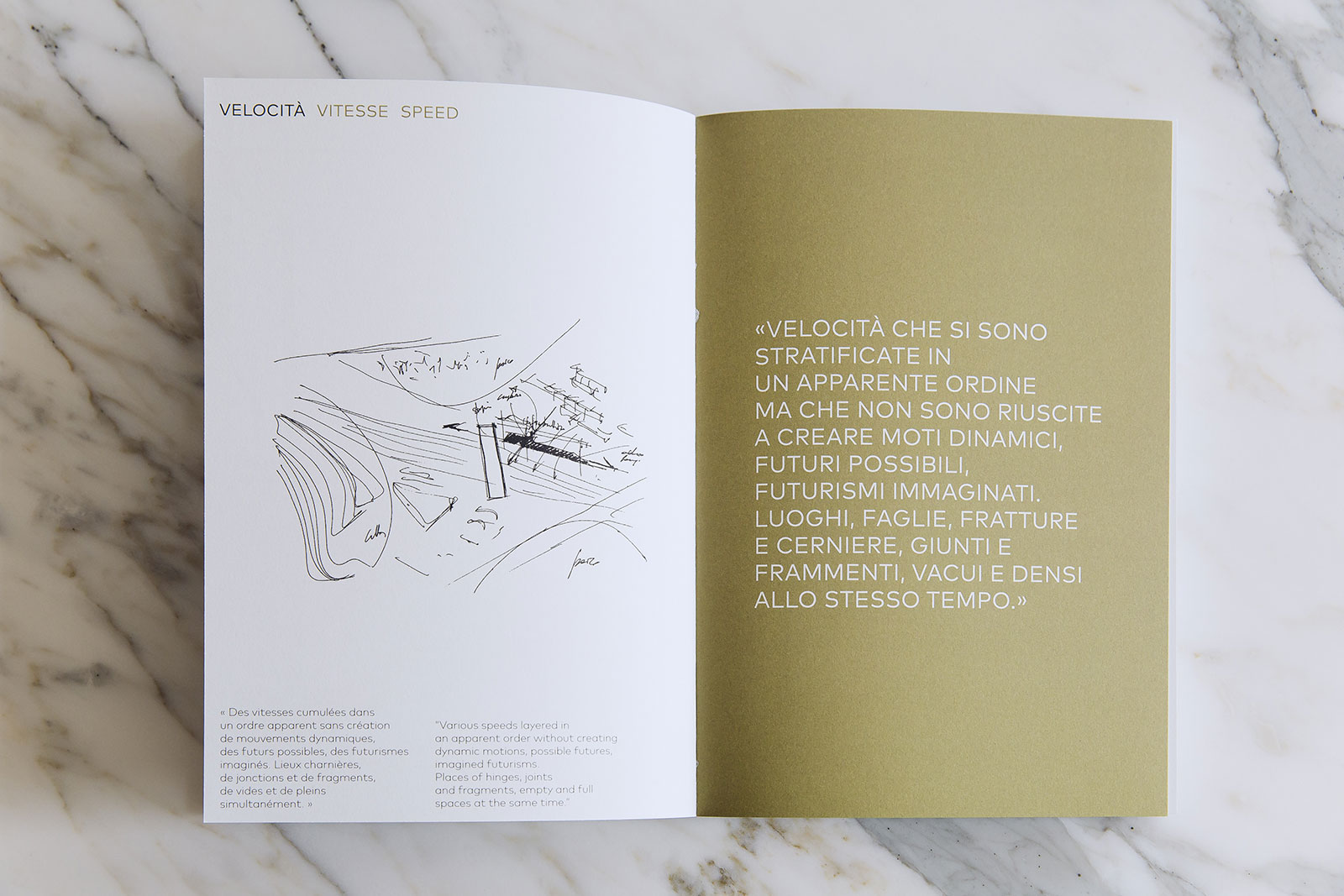
New BNL-BNP Paribas headquarters
Rome, Italy
2012-2017
“Mies Van Der Rohe” Prize, mention (2017)
Smart Building Prize in the “Tertiary-Offices” category (2017)
Iconic Awards, winner of the “Best of Best” (2017)
Archmarathon Awards, 1st prize in the “Workspace” category (2017)
The Plan International Awards, 1st prize winner in the “Office/Business” category (2016)
program: Construction of the new BNL – BNP Paribas headquarters in Rome including offices, restaurants, a kindergarten and an auditorium with 300 seats
> total area: 85 000 sqm
> built area: 75 000 sqm
> parking area: 16.000 sqm
> auditorium: 400 sqm
> number of seats in auditorium: 300
> company canteen/restaurant: 1 825 sqm + 365 sqm (kitchen)
> number of seats in canteen/restaurant: 430
> kindergarten: 980 sqm
client: BNP Paribas Real Estate Development spa
project: Alfonso Femia * with
structural engineering: Redesco srl
services and environmental engineering: Ariatta Ingegneria dei sistemi srl
coordination and executive design: Starching – Studio Architettura e Ingegneria
urban planning consultant: Arch. Annalaura Spalla
general contractor: PGC Parsitalia
energy levels and certifications: Classe A
photos: ©L.Boegly, ©S.Anzini, ©O.Da Riz
ceramic model photographs: ©Ernesta Caviola
ceramic model: Danilo Trogu
book: “The Sky of Rome”
Rome, Italy
2012-2017
“Mies Van Der Rohe” Prize, mention (2017)
Smart Building Prize in the “Tertiary-Offices” category (2017)
Iconic Awards, winner of the “Best of Best” (2017)
Archmarathon Awards, 1st prize in the “Workspace” category (2017)
The Plan International Awards, 1st prize winner in the “Office/Business” category (2016)
program: Construction of the new BNL – BNP Paribas headquarters in Rome including offices, restaurants, a kindergarten and an auditorium with 300 seats
> total area: 85 000 sqm
> built area: 75 000 sqm
> parking area: 16.000 sqm
> auditorium: 400 sqm
> number of seats in auditorium: 300
> company canteen/restaurant: 1 825 sqm + 365 sqm (kitchen)
> number of seats in canteen/restaurant: 430
> kindergarten: 980 sqm
client: BNP Paribas Real Estate Development spa
project: Alfonso Femia * with
structural engineering: Redesco srl
services and environmental engineering: Ariatta Ingegneria dei sistemi srl
coordination and executive design: Starching – Studio Architettura e Ingegneria
urban planning consultant: Arch. Annalaura Spalla
general contractor: PGC Parsitalia
energy levels and certifications: Classe A
photos: ©L.Boegly, ©S.Anzini, ©O.Da Riz
ceramic model photographs: ©Ernesta Caviola
ceramic model: Danilo Trogu
book: “The Sky of Rome”
“Light and sky. Sky and light.
Not an ordinary light or a common sky.
Rome and its light. Rome and its sky.” AF
Not an ordinary light or a common sky.
Rome and its light. Rome and its sky.” AF
The design of the new headquarters of BNL is part of a particular and unique context. Unique because the nature of the context is a layering of infrastructures that are separated by two important urban areas of the city of Rome, thanks to the construction of the station for high-speed rail, which leads to a new role, not only in terms of services service but also as “urban place”. Particular because the area where the new building will stand, due to its geometric shape and topography and its relative orientation, suggests to design the building according to the principle of “Janus”.
We consider it important that the new building develops a dialogue with the adjacent complex of Tiburtina railway station, with its main features characterized by size and horizontality. The dialogue does not necessarily have to be direct, but should have references both to perspectives and to the different levels of the station, and also a different role (the horizontal stratification) in the new urban landscape.
Our goal is to meet the functional needs with a building that is capable, in its autonomy and identity, to belong to the urban context of the Tiburtina Station and at the same time to be representative both for the city of Rome and for its users.
From these considerations, a proposal is made for a building that is able to relate differently to the north-west with the district Pietralata and south-east with the Tiburtina Station complex. Dynamic, reflective and fading, where its perception is mainly dynamic and different meter after meter (from the train, from the station, from the different areas of the city), almost as if it was moving, comparatively, where the contect is urban or “slow”, facing North, the perception is static transparent and material.
The building thus assumes different roles leading our imagination to important works of contemporary artists and filmmakers who have treated the themes of perception and “reflection” of reality.
The proposed typological choice wants to be identified as a perceptual device of the context and of the reality, capable of establishing a symbolic value where it directs its gaze, a gaze directed at the same time towards two different landscapes: the dynamic one of the rail station and Rome’s horizon, and the urban one of the Pietralata district.
The perception ratio is subsequently a relationship that the project transfers from the outside to the inside, creating a succession of spaces now dilated and now compressed, which gradually accompany us, building a backbone both vertically and horizontally around all the “productive” areas, destined to be offices, and capable of revealing new “perspectives” and a new “context” from time to time.
The building comes formally to take on a symbolic value that is found in the following characteristics that define its “body”: the floor plan, linear and gently warped to the west through the writing of a variable sequence of broken lines; the choice of not wanting to create a “front and back” but a compositional score capable of creating amazement and wonder at the “metamorphosis” of the building, which will always be perceived in a different way thanks to its ability to react to the light at different times of day on different days of the year; the articulation of its functions, composed according to a principle of horizontal stratification, in a classic sequence of base; (“collective” functions or, better, that interface with the public), elevation (the predominant functions/ offices), the crown (the unexpected and unique space and its relationship with the sky); the entrance hall, highlighted according to a horizontal and vertical relationship thanks to the identification of a “union-separation” that becomes a “transparency-terrace” for four levels and reveals the Mazzoni water tank, an original and still intact element.
• PROJECT VIDEOS:
> *inside the whale* – BNL Roma Tiburtina
> Il Cielo di Roma
We consider it important that the new building develops a dialogue with the adjacent complex of Tiburtina railway station, with its main features characterized by size and horizontality. The dialogue does not necessarily have to be direct, but should have references both to perspectives and to the different levels of the station, and also a different role (the horizontal stratification) in the new urban landscape.
Our goal is to meet the functional needs with a building that is capable, in its autonomy and identity, to belong to the urban context of the Tiburtina Station and at the same time to be representative both for the city of Rome and for its users.
From these considerations, a proposal is made for a building that is able to relate differently to the north-west with the district Pietralata and south-east with the Tiburtina Station complex. Dynamic, reflective and fading, where its perception is mainly dynamic and different meter after meter (from the train, from the station, from the different areas of the city), almost as if it was moving, comparatively, where the contect is urban or “slow”, facing North, the perception is static transparent and material.
The building thus assumes different roles leading our imagination to important works of contemporary artists and filmmakers who have treated the themes of perception and “reflection” of reality.
The proposed typological choice wants to be identified as a perceptual device of the context and of the reality, capable of establishing a symbolic value where it directs its gaze, a gaze directed at the same time towards two different landscapes: the dynamic one of the rail station and Rome’s horizon, and the urban one of the Pietralata district.
The perception ratio is subsequently a relationship that the project transfers from the outside to the inside, creating a succession of spaces now dilated and now compressed, which gradually accompany us, building a backbone both vertically and horizontally around all the “productive” areas, destined to be offices, and capable of revealing new “perspectives” and a new “context” from time to time.
The building comes formally to take on a symbolic value that is found in the following characteristics that define its “body”: the floor plan, linear and gently warped to the west through the writing of a variable sequence of broken lines; the choice of not wanting to create a “front and back” but a compositional score capable of creating amazement and wonder at the “metamorphosis” of the building, which will always be perceived in a different way thanks to its ability to react to the light at different times of day on different days of the year; the articulation of its functions, composed according to a principle of horizontal stratification, in a classic sequence of base; (“collective” functions or, better, that interface with the public), elevation (the predominant functions/ offices), the crown (the unexpected and unique space and its relationship with the sky); the entrance hall, highlighted according to a horizontal and vertical relationship thanks to the identification of a “union-separation” that becomes a “transparency-terrace” for four levels and reveals the Mazzoni water tank, an original and still intact element.
• PROJECT VIDEOS:
> *inside the whale* – BNL Roma Tiburtina
> Il Cielo di Roma



